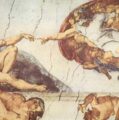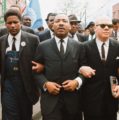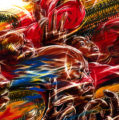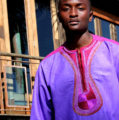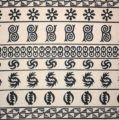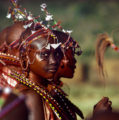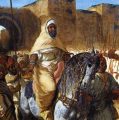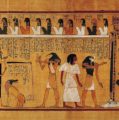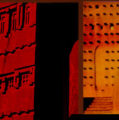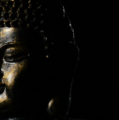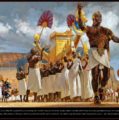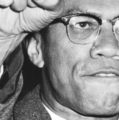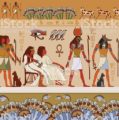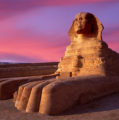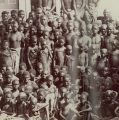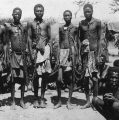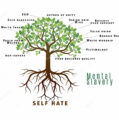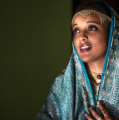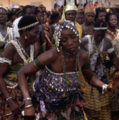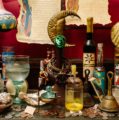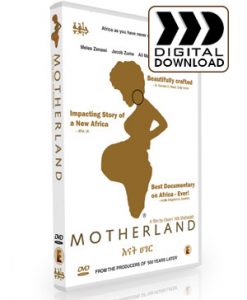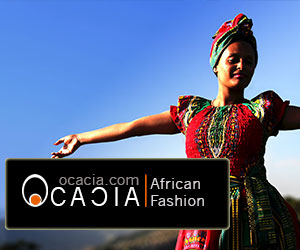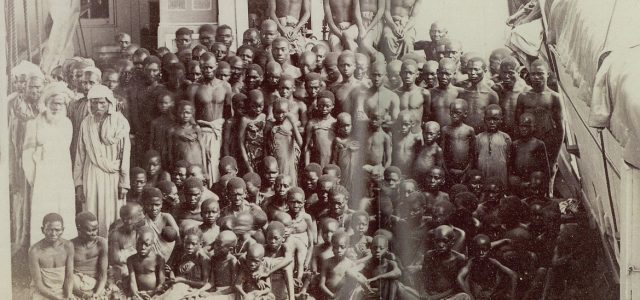
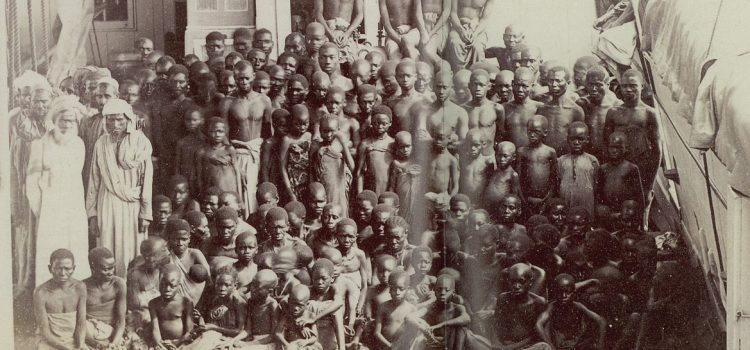

The History of Arab Slavery in Africa
Alik Shahadah 2002
This article has been transferred from an older format, still a work in progress.
Also, read our commentary: Confronting anti-black racism in the Arab world
See Also War and Religion1)This article while not directly related shows a compelling argument against involving religion in human problems. Arabs enslaved Africans before Islam, just like Europeans did not need Christianity to enslave Africans. Religion might have been used to justify enslaving Africans, but it was not central in the reason for enslaving people. The central motive is 100% human greed. The bottom line is always in dollars. and Jews and Slavery
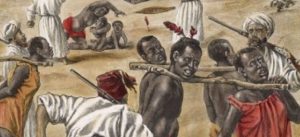 While Europeans targeted men in West Africa, the ‘Arab‘ [1] slave trade primarily targeted the women of East Africa to serve as domestic slaves, wet nannies, and sex slaves in the infamous harems. This trade trickled over millennia is estimated to have taken more than 2 million2)see numbers section Africans via the Swahili coast to India, Saudi Arabia, China, and Turkey, and also via the Trans-Saharan route to North Africa and the Mediterranean, where in slave markets such as Ceuta, Morocco. Africans were purchased to work as domestic servants in Spain, Portugal, and other Western European countries. Today the Arab slave trade in Africans still goes on in some countries like Libya 3)Especially since the Western assassination of Gaddafi.although it is tied to the global contemporary slave trade, it is a direct evolution of the historical Arab slave trade in African people.
While Europeans targeted men in West Africa, the ‘Arab‘ [1] slave trade primarily targeted the women of East Africa to serve as domestic slaves, wet nannies, and sex slaves in the infamous harems. This trade trickled over millennia is estimated to have taken more than 2 million2)see numbers section Africans via the Swahili coast to India, Saudi Arabia, China, and Turkey, and also via the Trans-Saharan route to North Africa and the Mediterranean, where in slave markets such as Ceuta, Morocco. Africans were purchased to work as domestic servants in Spain, Portugal, and other Western European countries. Today the Arab slave trade in Africans still goes on in some countries like Libya 3)Especially since the Western assassination of Gaddafi.although it is tied to the global contemporary slave trade, it is a direct evolution of the historical Arab slave trade in African people.

Women are the target today
Today Africans from Uganda to Ethiopia are still victims of modern slavery in some Middle Eastern countries. Uganda, for example, has banned its citizens from seeking work in most Middle Eastern countries. But many contravene this due the promise of much higher wages. While some are duped with the promise of higher earnings, some are directly sold by their families for as little as $14 but sold for as much as $10,000 . Some only return to Africa in body bags. Every instance of modern slavery is an outcrop of Africa’s economic underdevelopment.
The study of the Arab slave trade, like the Atlantic slave trade and the continental trade, are not just historical events, they are also political tools, and maneuvered around as such. It has become increasingly important to deal with both the historical as well as the political in any treatment of these subjects in our contemporary moment.4)If we had big industries manufacture products we would also create local wealth, local skills, and local jobs and our people would not have to cross the Red or Mediterranean sea and end up slaves.
Throughout history, it has been the inaction of those who could have acted, the indifference of those who should have known better, the silence of the voice of justice when it mattered most, that has made it possible for evil to triumph.— Haile Selassie
SLAVERY IN ARAB SOCIETIES
The Arab slave trade for most of it’s history was a trickle trade, which boomed in the 19th century. Prior to this period, the trade between Arabia and Africa was more focused on iron, ivory and animal products. There is very little evidence in the sources to support the claim that slaving was ever a major enterprise of any significance prior to the 19 th century boom. Archeological finds of slavery in East Africa are very poor. 5)Archaeology of Slavery in East Africa Chapurukha M. KusimbaSo we just do not know.
Genetic evidence does however point to a 2500-year-old female-mediated gene flow from Africa to Arabia. This means that African women have been part of the population of Arabia, especially Yemen.
This points to some form of enslavement due to the dynamics of gender and conquest; conquering men impregnate conquered women.[1] This proves the Arab slave trade had to be one of the oldest forced exoduses of African people out of Africa.6)It is the oldest also because it has not stopped
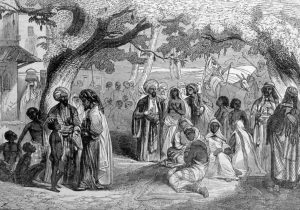
Arab slave market
Africa’s internal slave trade is the oldest in the world, since some of the oldest civilizations/communities are in Africa. Moreover, Africa is not a country, and should not be treated as a united single polity. “Oldest” however is a loaded term because being older has nothing to do with impact. [2] But in terms of external trades, and forced exodus of Africans, the Arab trade is the oldest, as far as Africa is concerned. And its influence is still responsible for the social status of some African groups especially in Chad, Sudan and Mauritania. And it is during the Arab slave trade that we see the first clear evidence of a racist attitude in history towards African people. [note]
Arab enslavement of Africans was radically different from its European counterpart. [3] It was more complex and
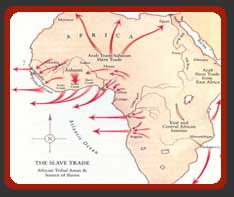
Slave Routes
varied depending on time and place. Its legacy was also radically different in the terms of post-slavery racism and disruption to African sovereignty. The slavery seen in Iraq with the Zanj/Zinj and slavery in Zanzibar was more akin to the slavery in the America’s, and those were the exceptions. Also ‘Arab’ is not a racial group, but an overarching term hugging Arabs who are African and some who are White and Jewish. (Mizrahi, which includes Syrian, Iraqi, Persian, Kurdish, Egyptian, Moroccan, and Tunisian Jews). This makes any discussion of the Arab slave trade problematic using 21st century identity models.
It was once believed that the Atlantic slave trade was a largely self-contained phenomenon. However, it is now acknowledged that this slave trade was part of a much wider picture, which includes traditional African slave systems, and the Arab slave trade. All conflicted at various stages in their history as well as complemented each other.
LEGACY AND DIFFERENCE
Let us not pretend, however, that racism just roiled over and died when it
was struck by the lightning of Islam. There were more positive black images,
to be sure, in the Koran than in the Bible, far more black figures emerging as
supreme powers in Islamic lands than in the lands of European Christendom.
God created man of black clay, says the Koran, and the scandalous story of the
curse of Ham (which gave so many bigots an almost divine justification for
despising Blacks) had no place in the Islamic scriptures. Where in the legend
of the early Christian world could we find figures like the black general
Ubadah who commanded the surrender of Egypt from Europeans? 7 Or a re-
vered Black like Bilal, among the first companions of the Prophet, a third
pillar of the faith, who brought the infidel forces of Syria to their knees?
Search as hard as you may though the Christian pantheon of heroes and you
will never find the likes of Ya’kub Ibn Yusuf, also known as al-Mansur, who
ruled Morocco from 1149-1189 and invaded Andalusia twice, becoming one
of the greatest of the Moorish rulers of Spain–Ivan Van Sertima
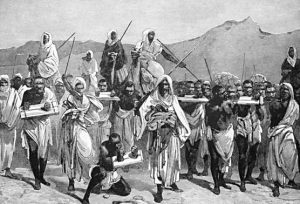
Contrary to popular belief, it was not in the immediate interest of Arab slavers to convert enslaved Africans to Islam, because being Muslim granted the enslaved Africans more rights to manumission. (See Umayyad Caliphate)[2] And if the people they were capturing were already Muslim it would “delegitimize” the capture.
One of the biggest differences between Arab slaving and European slaving was that slaves were drawn from all racial groups and they were rarely used as a means of crop production; slaves were not the economic engine behind Arab economies. Social mobility was possible “from slave to Sultan” (Mamluks and Najahid dynasty), many Africans were used in the armies of the Moroccan sultan (17th century) and also in the Egyptian forces during the early days of Islamic expansion.
Upward mobility within Islamic/Arab slavery, as within African systems, was not rare. Even Tariq ibn Ziyad (who conquered Spain and Gibraltar was named after) was a slave of the emir of Ifriqiya, Musa bin Nusayr, who gave him his freedom and appointed him a general in his army. This has never occurred, even once, in three centuries of the Atlantic system. Religiosity had no bearing in the New World, only skin color: Class, literacy levels, ethnicity, social status were of zero consideration on the plantations of the New World. However, In both systems the stigma attached to being a slave, became attached to being African which lead to the perception of inferiority. In the case of the African trade this was diminished since enslaver and enslaved generally looked the same (except in places like Sudan, Sahel, and Ethiopia). As with Christianity, Islam did compound the issue due to the culture of the bearers that transferred the religion to weaker people accepting Islam (this was not the case in most of Africa since powerful rulers accepted Islam on their African terms). [note]
“Therefore, the Negro nation are, as a rule, submissive to slavery, because [Negroes] have little [that is essentially] human and have attributes that are quite similar to those of dumb animals, as we have stated.” –Ibn Khaldun, _Muqaddimah_, 14th century AD
Arab slavery generally lacked massive plantations, where large droves of slaves toiled to the crack of a whip in the hot sun. Iraq was one of the exceptions, and according to Ali Mazrui the Zanj uprising deterred further attempts in the Arab world; with the notable exception of Zanzibar in the 19th century
Unlike the European trade in enslaved Africans, the physical remnants of this trade are very hard to measure. No one has detailed records of numbers lost, or a full chronology of events. Anyone claiming to have actual numbers is not doing history, but political guesswork. There are also no ghettos, mental institutions or prisons holding African people. And this is where the “agendas” in history come into play. We must never forget the role of political objectives in the study of history. The current anti-Arab, anti-Islamic Islamophobic trend has played a significant role in this study.
Today, due to lack of information, beyond rhetoric and Eurocentric propaganda, some think that the Arab slave trade and the European trade shared all the same properties—that they were mirrors of the same reality. So wherever a sentence says “European slave trade” just replace it with “Arab slave trade” and you have that history. Because Christianity in the African world (excluding Ethiopia) was largely the product of slavery and colonialism, it must also be true for Islam in Africa. So this produces a forced ahistorical casual association between the rise of Islam in Africa, and the Arab slave trade. So now the entire Islamic history of Africa is a consequence of a supposed Arab invasion. Without any evidence to qualify these myths, another wave of intellectual destruction is taking away the agency and legacy of African Muslim contributions.[5] (As well as independent Christian history in Africa)African-Arab relations and African-Islamic ties are all outside of the interest of Europe. The rise of the Nation of Islam (especially the leadership of Farrakhan) and Islam among African-Diaspora is also not desirable by Western nations. (Mathonsi) The influx of Somali, and other Muslim groups is a serious concern for places such as Norway and other Western Nations. All of this is necessary to show the backdrop to the attitudes and motives for the “new” focus on Arabs. And when we look at the principal authors of this “new” study we see the hands of people like Ronald Segal, and Bernard Lewis as the prime authorities on a slave trade that Africans experienced.[3]
Europeans and Islam have been in conflict since the Crusades, a lot of the histories around the “Arab slave trade” are a direct outcrop of that hostility; creating a deeply prejudicial study. (Bangura) Its principal end result is the perpetual demonizing of Islam.(Mirmotahari 2011) There is also the position of “sharing” responsibility with Arabs which has now shifted to “revealing” how more disastrous in scale the Arab trade was. This “look at them – dont watch me” allows greater de-emphasis on the European slaving legacy. It also brings a counter-argument such as “But don’t forget the Arab trade predated European slaving and lasted millennia.” Slavery was not unique to Europe, many African nations engaged in slavery far longer than Arabia and Europe. But without understanding the massive apex role of Europeans it is easy to confuse duration with impact and legacy.
One position rarely detailed is why the Europeans were so eager to destroy the Arab slave trade on the Swahili coast. The destruction of slaving was not a “humanitarian” activity by David Livingstone (the colonial fixer) because several undeniable things happened after the extinguishing of Arab monopoly in the region. This tactic was repeated many times in history including the American Civil War when Lincoln used abolition of slavery to weaken the South.7)It is sometimes said that the Emancipation Proclamation freed no slaves. In a way, this is true. The proclamation would only apply to the Confederate States, as an act to seize enemy resources. By freeing slaves in the Confederacy, Lincoln was actually freeing people he did not directly control. The way he explained the Proclamation made it acceptable to much of the Union army. He emphasized emancipation as a way to shorten the war by taking Southern resources and hence reducing Confederate strength. Even McClellan supported the policy as a soldier. Lincoln made no such offer of freedom to the border states.- Source
- Diminished the economic and hence political power of their (The Arabs) competitors for African resources
- Allowed missionaries to create new Christians. (Mental Slavery)
- Creating strategic trade and military positions in the Red Sea.
- Most importantly it was the precursor to Colonialism (a humanitarian excuse to invade.) Resulting in the acquisition of African resources which still goes on until this day.
There is nothing nice about being a slave of either Arabs, Europeans or even Africans. Slavery, mild or otherwise, is a crime against a human being. But it would be historically and morally inaccurate not to cite that there is a serious difference between vassalship and Chattelship.
Western Europe not only corrupted the slave/servility systems in Africa they also caused the Arab slave boom in the 19th century.[2] And most critical is Europe’s continuation of the African Holocaust up through colonialism, apartheid, neocolonialism and the current exploitation of Africa’s resources.[3] These events are not disconnected, although attempts are made to dichotomize these realities.
Where are the massive companies in Ghana, Lagos, and Arabia that funded slavery? But you can find the likes of JP Morgan and Lloyds of London all over the Western world.[3] Right now you can look at millions of Brazilians, millions of African Americans, millions of African Caribbean, millions of broken communities in West Africa, and millions of people in South Africa, every single one of them the product of European systems.
The global racism towards Africans is again the work of the West in fashioning media to write, and wipe Africans out of humanity. It is therefore ironic, but perhaps evidence of the crisis, that some African-Americans wearing the names of Europeans chose to find a greater issue with the Arab Slave Trade while living in the legacy of the European trade.
The distant Arab slave trade with its states in Zanzibar have long vanished from the economic-political landscape. [3] The legacy of race dynamics in the Arab world, however, has not. But the wealth of Great Britain and France continue uninterrupted. The governments, churches, businesses, and royal decrees, that funded and approved slavery remain unaltered. 140 million Africans in the Western Hemisphere, representing around 14% of the world’s population are the visible consequences of Western Slaving and this is not only a numbers issue, as this Diaspora also represents the absolute bottom of every social-economic graph. And while the Arab racism in academia (which was never dominant) has dropped off more than a 100 years ago, the European discourse in corrupting, footnoting, washing out the history of Africans is an institutionalized industry.
8)Cite book|title = Fashion Buying and Merchandising: From mass-market to luxury retail|last = Hebrero|first = Miguel|publisher = Createspace|year = 2015|isbn = 978-1517632946|location = London|pages = 64
ARAB ASSIMILATION
Some women stolen from Africa were stolen to serve the infamous Arabian harems (exploited as sex-slaves); their children were born free to Arab fathers, and thus would have been heirs to wealth and status, fully and equally assimilated into the population (good for Arabia, bad for African identity). [5] Their mothers receives the title of “umm walad” (lit. mother of a child), which was an improvement in her status as she could no longer be sold. Among Sunnis, he is automatically freed upon her master’s death, however for Shi’a, she is only freed if her child is still alive; her value is then deducted from this child’s share of the inheritance.[1] These umm walad, attained “an intermediate position between slave and free” pending their freedom, although they would sometimes be nominally freed as soon as they gave birth.
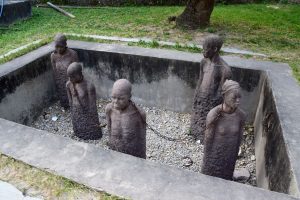
Monuments to the history of slavery in Zanzibar
Some Afro-Arabs rose to great stations by virtue of their Arab fathers. This also added to disassociation with African culture due to the opportunities “being Arab” brought. (similar to the mulatto culture seen in the Caribbean) So we see a diminishing of Africa and a rise of Arabia, at the expense of African identity by the process of enslavement and cultural displacement. The infamous eunuchs were infertile, and the other men who were enslaved would have gradually married non-African women, hence facilitating the absorption of African culture and lineage into an Arab one (acculturation that is a force still at work today). The contrasting differences between racial definitions on the Arabian continent as opposed to Europe assist in blending the majority of Africans stolen from Africa into the general population of Arabia. However, in the West there was no transcending “racial stigmas.” in any way shape or form.
MAAFA AUDIO HISTORY
ISLAM AND SLAVERY
The Red Sea is not the Atlantic Ocean– Hakim Quick
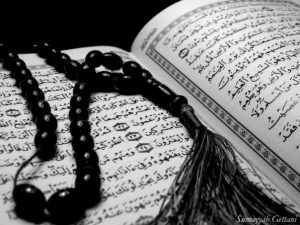
Qur’an and Slavery
Modern history has done Islam an injustice by assigning every activity of every Turk and Arab to the discredit of the Islamic faith. So the racist writings of any Arab, anywhere, Islamic or non-Islamic, are used as testimony against Islam. Regardless of if Islam is the best attribute to describe these people. [4] They have become the “official” representatives of Islam just by being of Islamic heritage or living in the Islamic world.
The same thing happens with Jewish history (further confused because “being Jewish” also includes even atheists in their definition, while Muslims do not) . So the perception of an Islamic monolith is a recurring theme in Western history. So we see “Islamic invasion”, etc. And a few reasons exist for this historical set-up. 1. Islam is considered “the other,” and just like with Africa [2], it is easy to understand it by compressing it into a single entity, which acts with a single mind-set as if from a single leader. This is not only true for Europeans writing history; it is true across the board. Because anyone writing their own history has a more complex story about themselves than about “the other.” Muslims writing about the West do the same thing, the West becomes monolithic. 2. The most threatening force to Europe’s domination was Islam. European powers have always tried to demonize Islam, even before the crusades. Muslim countries have large oil deposits, as well as posing a serious military and political threat to Western markets. Muslims historically have been an impasse, the greatest impasse, to total Western domination. (see Libya and historically the Ottoman Empire and the trade routes to the East)
While Islam and the history of Arab slavery are collapsed for biased political reasons, and therefore debatable as it assumes a causal relationship between the religion and the politics of Arab people (a minority group in Islam).(Patrick Manning) It can be said that with the coming of Islam it allowed for greater polities among what would have been antagonistic Arab clans.
Islam gave the Arabs a national identity, which allowed them to expand their geopolitical domination in a way previously impossible. The same way it gave power to the emerging powers in West Africa in the 11th century allowing for large unified polities such as Songhai. Arabs did not enslave Africans because of a religious edict (fatwa), they did so for their own greed and nationalistic interest–like everyone else, including other African nations. The power technology gave Europe allowed them to be successful in exploiting Africa, in the same way the power of an Islamic polity created the power for Arab exploitation, and later Ottoman exploitation. We cannot blame the invention of naval technology because it was used to transport enslaved Africans, we cannot blame a scientist for discovering the power of the atom for Hiroshima; yes there is a correlation, but not a direct causation. As Karenga states, they had the power to destroy but lacked the moral capacity not to. Any error within the Islamic faith must be discussed within these conditions, the error within Arab, African or European culture must also be discussed within its ambit of influence. As well as the fallacy of human nature—which is usually universally defined by greed and intolerance.
Al-Hakim bi-Amr Allah, ruler of the Fatimid dynasty in Egypt made a fatwa banning all slavery in the land during his reign (996-1021).
COMING OF ISLAM
Even as the fingers of the two hands are equal, so are human beings equal to one another. No one has any right, nor any preference to claim over another—You are brothers– Prophet Muhammad (last sermon)
When Islam arrived, war and servitude were features of almost all “advanced” societies, inducing African and Arabian communities. African indigenous faiths within states/kingdoms had no general objection to enslaving people. [7] Also Judaism existed among certain Arab tribes as well as Christianity, and like
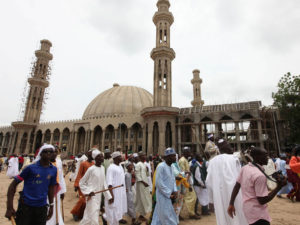
Mosque in Nigeria
them Islam did not blatantly outlaw slavery. However the Qur’an with every reference to slavery asks the believer to free the slave as atonement for sin, the term “emancipating a slave and feeding an orphan” are repeated constantly throughout the Qur’an as acts which gain God’s favor.
Whoever kills his slave, we will kill him–Sunan an-Nasa’i 4736
Islam is, therefore, one of the only abolition mainstream religion which contains within its sacred text a message of manumission. And I do not think people understand this was 1500 years ago! It is a profound accomplishment that must not be mitigated. Why would a religion in the 7th century even care about the abolition of slavery and advancing human rights centuries before William Wilberforce or social movements like Black Lives Matter? Way before the 13th amendment and reconstruction. Way before Lincoln and his “claim” of being an emancipator. Islam in the 7th century was on its own a revolution of humanity against a backdrop where the concept of egalitarianism was totally out of sync with any movement before or for a long time after it. These are the concepts attached to our modern era. And serious credit is needed for a religion to make manumission and aspect of religious devotion (Ibadat).
So Islam brought about regulations that enhanced the pre-Islamic laws with respect to the treatment of enslaved people. Ideally, they were entitled to good care, to the same clothing and food as their masters. These enslaved people were more akin to indentured servants in Europe than chattel slaves in the Americas. Unfortunately, all of this did not matter since the reality once slavery became integrated into Muslim societies no verse in the Qur’an was going to stop it, just like nothing Jesus said stopped slavery in the Western hemisphere for hundreds of years. That is just how humans are, and probably always will be.
They are your brothers whom Allah placed under your hands. Feed them with what you eat, clothe them with what you wear and do not impose duties upon them which will overcome them. If you so impose duties, then assist them–Muslim by the way of ibn Umar
Other cultures limit a master’s right to harm a slave but few exhort masters to treat their slaves kindly, and the placement of slaves in the same category as other weak members of society who deserve protection is unknown outside the Qur’an. The unique contribution of the Qur’an, then, is to be found in its emphasis on the place of slaves in society and society’s responsibility toward the slave, perhaps the most progressive legislation on slavery in its time–Jonathan Brockopp
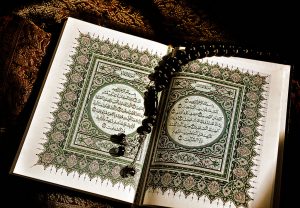
Qur’an and Slavery
Qur’anic legislation brought two major changes to ancient slavery, which were to have far-reaching effects: the presumption of freedom, and the ban on the enslavement of free persons except in strictly defined circumstances (Lewis). It became a fundamental principle of Islamic jurisprudence that the natural condition, and therefore the presumed status, of mankind, was freedom. Islamic sharia, ideally at least, attempted to address the reality of slavery that was prevalent at the time by bringing new legislation, which promoted an equitable resolution to the pre-existing slave contract. Despite this, there were the greedy and the vindictive that sought to make slaves of their Muslim brothers and sisters (usually by declaring their Islam invalid) as well as other Africans.
There were also many Christian and Mizrahi Jewish Arab groups as well as other indigenous Arabs that continued their tradition of slaving. Because Islamic Sharia had laws pertaining to slavery it was seen by the opportunist as a natural God sanctioned feature of life. Conveniently, the numerous laws of manumission were given a social back seat. So where theory meets reality we see that Islamic belief did not halt slavery. But because it did not halt slavery, while expanding in the influence it actually caused an increase in slaving. According to Patrick Manning, Islam by recognizing and codifying slavery seems to have done more to protect and expand slavery than the reverse it. Bernard Lewis correctly adds by saying that:
In one of the sad paradoxes of human history, it was the humanitarian reforms brought by Islam that resulted in a vast development of the slave trade inside, and still more outside, the Islamic empire–Bernard Lewis
And as Arabs and other Muslims gained power, via Islam, it allowed their failures to be more destructive. Just as with democracy today, Islam was used as justification for conquest, and conquest brought slaves as the spoils of war. Muslim community could ill afford to do away with slavery in its entirety because this would have also negatively impacted empire, expansion and nation building. But this dilemma also meant that the more powerful Muslim states became, the more dependent on forced labor they became—distancing themselves from Islam’s destiny of total abolition. And this is just part of human nature; it is no different in Christianity. Jesus did not advocate slavery yet it is ironic the followers of Jesus ignored this and were history’s biggest slavers. Muslims pick what suit them to protect their profits–like everyone else.
ARTWORK NOTE
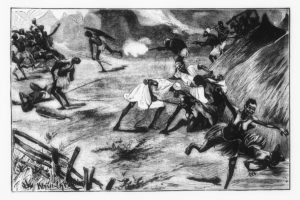
Europeans propaganda artwork
Overzealous Europeans have always over-documented the Arab trade in enslaved Africans to alleviate their guilt concerning their own trade. “Well the Arabs did it too ” became the common tone of contemporary historians. Sadly, many African-American historians who have only these European sources to infer history from have taken these second-hand guilt-massaging accounts as gospel. However, it is a well-known fact that Europeans in their artistic depictions of slave raids have always intentionally portrayed slave raiders as Muslim Africans or Arabs .
EUNUCHS OF THE ARAB SLAVE TRADE
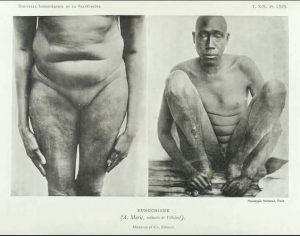
Eunuch to serve Arabs
The most expensive enslaved group in Arabian societies were the eunuchs who were castrated men drawn from Europe but also Darfur, Abyssinia, Kordofan and other African nations. Ironically because of their lack of sexual function, they obtained great privileges while African female slaves’ privileges were due to their sexuality. Eunuchs were generally made by Coptic priests in Egypt but also a group of Arabs knows as the Chamba. Young boys, victims from raids and wars were subjected to the horrid monstrous inhumane process of castration without anesthesia which had a 60% mortality. To stop the bleeding hot coals were cast into the naked wound, which was followed by the most blood curdling alien scream a human could make. If the child survived this brutal act there was to be a life of influence and luxury; silk garments, Arabian thoroughbreds, jewels, were bestowed on them to reflect the wealth of their masters.(Hunwick)
Strangely eunuchs were both distinguished and greatly revered as elites in Arab society, despite being enslaved. They served as guards and caretakers of mosques as well as administrators. Clearly slave did not mean exclusively downtrodden and oppressed. The actual word slave was far from taboo as the most pious people were self-professed “slaves of Allah.” But for all their pomp they were men who were stripped of their manhood , the one thing that all oppressors live in fear of. And today it is sad to see many Africans still only have “power”as guardians of mosque while having no wealth or independent expression in Arab society.
ARABS AND AFRICANS : Relations and Perceptions
The Afro-Arab relationship was riddled with complexities lined in a cultural nexus. And there is no doubt that racial discrimination against people of African origin was a hard reality. There is an escalation of racism as a casual association with
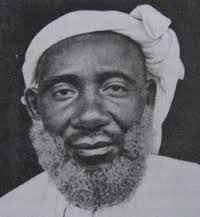
Tippu Tip
Black Skin and Slave was made. And considering the era in which Islam emerged it is therefore even more astounding and revolutionary to find such a strong tone of racial harmony and equality.
This racism was across the board from China to India. The Greeks in their time wrote a similar sentiment about the Persians, even though the Persians were more advanced in many ways. There is no point looking at perceptions of “the other” in the historical record and labeling people as distinctively racist when all human societies, even inside of Africa, would have labeled “the other” as barbaric and primitive. (case in point Amhara towards the Oromo). However in our modern era the stigma and negative association has not altered in the Arab world (a few places such as Egypt and especially Morocco being unique). According to Arnold J. Toynbee: “The extinction of race consciousness as between Muslims is one of the outstanding achievements of Islam and in the contemporary world there is, as it happens, a crying need for the propagation of this Islamic virtue.” Now this statement has to be treated as “relative” to the West and is time-sensitive. Because as the notion of African being attached to being enslaved grew so to did the deterioration of “being African” in the Arab world.
The Equator is inhabited by communities of blacks who may be numbered among the savage beasts. Their complexion and hair are burnt and they are physically and morally abnormal. Their brains almost boil from the sun’s heat–Al-Dimashqi
However, the greatest thing to appreciate is that the 18 th century definition of “Black” did not exist in this period and some so-called Arabs were Arab linguistically but racially African. For example, in some cases, Ethiopians and people of Punt were classified outside of Black identity. The Arab trade in enslaved Africans was not only conducted by Asiatic and Caucasian Arabs but also African Arabs: Africans speaking Arabic as a first language embracing an Arab culture.
As for the Zanj, they are people of black color, flat noses, kinky hair, and little understanding or intelligence–Al-Muqaddasi
These Africans would have been part of the Arab society; they would have permanently resided within Arabia for generations. Some may have seen themselves as Arab as African-Americans define themselves as American; it was their nationality and did not conflict with their greater African identity. Some would have seen Africans as a cursed identity to discard and escape. Via miscegenation children of Arab and African unions were racially Arab and evidence of this even exist today: Prince Bandar bin Sultan and Anwar Sadat. Some, however, by being Arab, rejected all attributes which linked them to Africa. Something is seen by some Sudanese and Mauritanians today. This is identical to the Mulatto dilemma in the French and British Caribbean, Brazil, USA, and Brazil. (especially before the 1960’s in America).
All mankind is from Adam and Eve, an Arab has no superiority over a non-Arab nor a non-Arab has any superiority over an Arab; also a White has no superiority over Black nor a Black has any superiority over White except by piety and good action.–Prophet Muhammad
JIHADS AGAINST SLAVERY AND COLONIALISM
Martin Klien reviews Lovejoy’s book by stating: The core argument of the book is that jihad leaders were opposed to the sale of Muslims, that many regimes banned the sale of Muslims to Christians, and that as a result, the export of slaves from Muslim areas declined after the jihads. This argument—also made recently by Rudolf Ware III (The Walking Qu’ran: Islamic Education, Embodied Knowledge, and History in West Africa, University of North Carolina Press, 2014)—is supported by data indicating that after the Sokoto jihad (1804–1808), most of the slaves exported from Africa were from Central Africa and the Bight of Biafra, and thus were not Muslim. Lovejoy concedes, however, that while the major jihad leaders tried to stop the sale to Europeans, they were not always successful, and their successors were not always resolute. In the Fuuta Tooro, for example, there was a decline in revolutionary zeal after the death of founder Abdul Kader Kan in 18079)Jihad in West Africa During the Age of Revolutions Paul Lovejoy
“Of course the image is always given that the Africans themselves acquiesce to the process of slavery. But you’ll find that in West Africa there was a polity or a political entity that existed that guaranteed security right across West Africa and that was the Songhay Empire. We saw the emergence of Nasir Al Din in the 16th Century. We saw Malik Sy in the 16th Century as well, and men like Abdul Qadeer and Cherno Sulayman Kaba, these men who waged resistance in what is known as Futa Toro and Futa Jalon. — Muhammad Shareef
SWAHILI MARKETS
(2010) The author and researchers are working on updating this section after concluding research in Mombasa and Zanzibar.
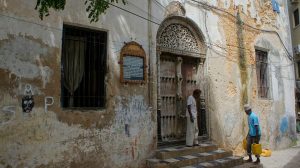
House in Zanzibar
From 1800 to 1890, between 25,000–50,000 African captives for the overseas market are thought to have been sold from the slave market of Zanzibar to the Somali coast. Most of these people were from the Majindo, Makua, Nyasa, Yao, Zalama, Zaramo and Zigua ethnic groups of Tanzania, Mozambique and Malawi: Collectively, known as Mushunguli, which is a term taken from Mzigula, the Zigua tribe’s word for “people” (the word holds multiple implied meanings including “worker”, “foreigner”, and “slave.”
As with all slaving regions in Africa, people captured locally during wars and raids were also enslaved by Somalis. Somali were, like Ethiopians, perceived as superior by the European and Arab slave traders to the region.
While upholding the perception of Somalis as distinct from and superior to the European construct of “black Africans”, both British and Italian colonial administrators placed the Jubba valley population in the latter category. Colonial discourse described the Jubba valley as occupied by a distinct group of inferior races, collectively identified as the WaGosha by the British and the WaGoscia by the Italians. Colonial authorities administratively distinguished the Gosha as an inferior social category, delineating a separate Gosha political district called Goshaland, and proposing a “native reserve” for the Gosha–Catherine Besteman [4]
During the 19th Century boom, approximately 65% of the population of Zanzibar was enslaved. The Swahili-Arab slave trade reached its height when approximately 20,000 slaves were considered to be carried yearly from Nkhotakota on Lake Malawi to Kilwa.
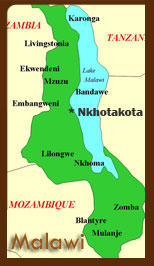 The slave trade was introduced in Malawi by the Swahili-Arab traders in the 19th Century following a great demand for ivory and slave in the East African markets namely Zanzibar, Kilwa, Mombasa and Quelimane. The Swahili-Arabs moved further into the interior of Africa including Malawi to obtain slaves and ivory. A key site in the path of Arab procurement was Nkhotakota where one of the Swahili-Arab slave traders, Salim-bin Abdullah (Jumbe) set up his headquarters on the shore of Lake Malawi in the 1840s. From Nkhota he organized his expeditions to obtain slaves and ship them across the lake to East African markets, Kilwa. About 20, 000 slaves (Pachai, P.A. 1968) were annually shipped by Jumbe to Kilwa from Nkhotakota. The captives were kept until they numbered 1000 and taken across the lake and then forced to walk for three to four-month journey to Kilwa where they were sold.
The slave trade was introduced in Malawi by the Swahili-Arab traders in the 19th Century following a great demand for ivory and slave in the East African markets namely Zanzibar, Kilwa, Mombasa and Quelimane. The Swahili-Arabs moved further into the interior of Africa including Malawi to obtain slaves and ivory. A key site in the path of Arab procurement was Nkhotakota where one of the Swahili-Arab slave traders, Salim-bin Abdullah (Jumbe) set up his headquarters on the shore of Lake Malawi in the 1840s. From Nkhota he organized his expeditions to obtain slaves and ship them across the lake to East African markets, Kilwa. About 20, 000 slaves (Pachai, P.A. 1968) were annually shipped by Jumbe to Kilwa from Nkhotakota. The captives were kept until they numbered 1000 and taken across the lake and then forced to walk for three to four-month journey to Kilwa where they were sold.
It was up until Nyasaland came under the British protectorate in 1891 that slave trade completely came to cease. For Europeans, the trade was the economic heart of rival Arabs in an age old struggle for trade monopolies. Striking at the source of Arab wealth creation had the double advantage of securing the territory and weakening their trade rivals. Harry Johnston, the first Commissioner in Nyasaland Protectorate, made a significant effort to secure the rival interest in the region for British trade interest.One of the policies of his administration stipulated was to bring the slave trade to an end, but not for humanitarian reasons but as a means of securing new markets and new ways of control over the region. Harry Johnston with a force of Sikh soldiers attacked Jumbe in 1894. Jumbe was tried and banished to Zanzibar. Clearing the way for Johnston and British interest in the region.
At Karonga where Mlozi, another Swahili-Arab, settled and terrorized the Nkhonde people and seized them as slaves to Zanzibar. He organized surprise raids as far as Chitipa and Zambia. He also employed a number of the Swahili from Tanzania who undertook such expeditions. He, however, came into conflict with African Lakes Company, formed by Scottish businessmen John and Fredrick Moir in 1878. The Moir brother had a mission to supply the missions working in the country and provide a “legitimate” trade as opposed to the slave trade to the Africans. The African Lakes Company and Mlozi fought each other. It was until Harry Johnston, sent soldiers and defeated Mlozi who was tried by the Nkhonde chiefs and hanged.
The southern highlands and was also controlled by the Yao chiefs. Nyezerera and Mkanda controlled the sub route passing between Mulanje Mountain and Michesi Hill. These terrorized the Nyanja people in the Shire highlands and the Mang’anja of the Lower Shire valley. Almost all the Yao chiefs stopped slaving after being defeated by the British Colonial Government forces led by Harry Johnston. The Colonial government then erected forts all along the slave routes to pre-colonize the area and secure the territory.
The main Slave Route in the interior of Africa, Central Africa, were Nkhotakota, Karonga, Mangochi and Phalombe where the Swahili-Arabs and their Yao allies built their headquarters and stockades and also organized expeditions to capture slaves as far as Zambia and Congo. At its peak Jumbe send about 20000 annually to the market of Kilwa. These routes were the major terminus of the Slaves in the entire of Central Africa going to the East African Coast Markets.
The end of the Arab-Swahili slave trade routes led to the coming in of another chapter in the history of Malawi and the whole of Central Africa – colonization. The forts which were constructed on the slave route, not only acted as site for control of the illegitimate trade, but also formed the basis of administration of new form of government established by colonialists. These sites have been maintained as administrative centers even in the post-colonial and independence period.
And while the Arab slave trade did not do much to create new Muslims or Arabization in the territories it plundered, David Livingstone was looking for a dual victory and he recommended that Christianity be introduced in the area under the guise of counteracting slave trade activities. He was an advocate of what he called the 3C’s : Christianity, Commerce and Civilization. The same Christianity that for 350 years guaranteed that more than 20 million Africans were shipped across the Atlantic and held as chattel. The premise still remains a part of Africa today, Europe knows what is best for Africans and is best suited in its civilizing mission of people still perceived as sub-human. And as Africans in the region accepted the European-Christian version of the Bible the Europeans took the lands and the resources in return.
MOMBASA
The dominance of Arab influence on Mombasa was suppressed for about 150 years when the Portuguese arrived.
In 1498, a Portuguese explorer called Vasco De Gama landed on the shores of Mombasa. The purpose of his exploration was to spread the Christian faith and to further expand Portugal’s trading area. His arrival to Mombasa was met which much hostility among the local people.
However, he made a very important ally, the King of Malindi. The Portuguese knew that Mombasa was essential in order to successfully trade their goods; hence in 1592 they used their power to make the King of Malindi the Sultan of Mombasa. In doing so the locals consequently had no choice but to obey the orders of the Sultan, which in turn came from the Portuguese Government.
AFRICAN BLOOD IN ARABIA
Mitochondrial DNA variation of populations from the Near East and Africa found a very high frequency of African lineages present in the Yemen Hadramawt: more than a third were of clear African origin. Other Arab populations carried ∼10% lineages of African origin, whereas non-Arab Near Eastern populations, by contrast, carried few or no such lineages, suggesting that gene flow has been preferentially added into Arab populations. Several lines of evidence suggest that most of this gene flow probably occurred within the past ∼2,500 years. In contrast, there is little evidence of male-mediated gene flow from African Africa in Y-chromosome haplotypes in Arab populations, including the Hadramawt. Taken together, these results are consistent with substantial migration from eastern Africa into Arabia, at least in part as a result of the Arab slave trade, and mainly female assimilation into the Arabian population as a result of miscegenation and manumission. [Chicago Journal – Fiona Gratrix]
There is however no doubt that the status of the African in Arabian society became associated with the enslaved. The word for slave (Abid) became the colloq. word for African. Other words such as Haratin speak to the social inferior class of Africans. Also Caucasoid Arab scholarship has its collection of racist such as Hanns Vischer who believed African “black” skin made them a slave-race. But equal evidence exists of the contempt for the trade as evident in the writings of Al-Nasiri. Books such as Tanwir al-Gabbash fi fasl al al-Sudan wa al-Habash by Ibn al-Jahiz, and Black and their Superiority over Whites by Ibn al-Marzuban testify to this. So, the legacy of the African presents in these Arab and later Turkish lands were far from that of absolute subjugation.
By the 14th century, an overwhelming number of enslaved Africans led to prejudice against African people in the works of several Arabic historians and geographers. For example, the Egyptian historian Al-Abshibi (1388-1446) wrote: “It is said that when the [African] slave is sated, he fornicates, when he is hungry, he steals.”
European mistranslations of Arab scholars and geographers from this time period have led many to attribute certain racist attitudes that were not prevalent until the 18th and 19th century to writings made centuries ago. Although bias against those of very dark complexion existed in the Arab world in the 15th century it didn’t have the stigma currently seen globally. Older translations of Ibn Khaldun, for example in The Negro land of the Arabs written in 1841 gives excerpts of older translations that were not part of later colonial propaganda and show Africans in a generally positive light. In 14th century North Africa, Ibn Khaldun, wrote in his Muqaddimah:
When the conquest of the West (by the Arabs) was completed, and merchants began to penetrate into the interior, they saw no nation of the Blacks so mighty as Ghanah, the dominions of which extended westward as far as the Ocean. The King’s court was kept in the city of Ghanah, which, according to the author of the Book of Roger (El Idrisi), and the author of the Book of Roads and Realms (El Bekri), is divided into two parts, standing on both banks of the Nile, and ranks among the largest and most populous cities of the world. The people of Ghanah had for neighbors, on the east, a nation, which, according to historians, was called Susu; after which came another named Mali; and after that another known by the name of Kaukau ; although some peop
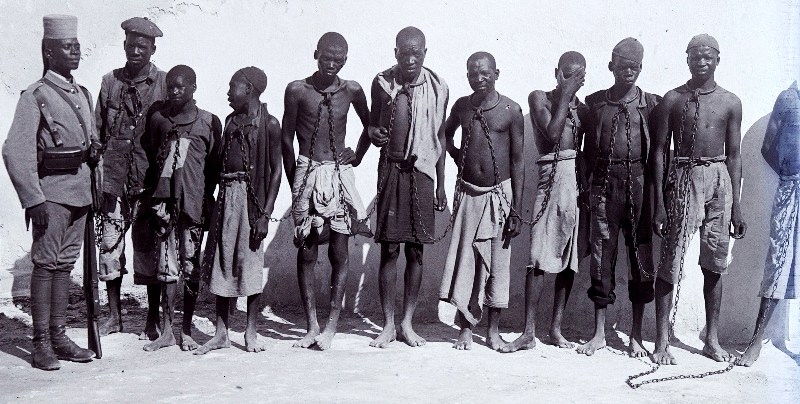
Askari Soldier guarding prisoners
le prefer a different orthography, and write this name Kagho. The last-named nation was followed by a people called Tekrur. The people of Ghanah declined in course of time, being overwhelmed or absorbed by the Molaththemun (or muffled people;that is, the Morabites), who, adjoining them on the north towards the Berber country, attacked them, and taking possession of their territory, compelled them to embrace the Mohammedan religion. The people of Ghanah, being invaded at a later period by the Susu, a nation of Africans in their neighborhood, were exterminated, or mixed with other African nations.
Ibn Khaldun suggests a link between the decline of Ghana and rise of the Almoravids. However, there is little evidence of there actually being an Almoravid conquest of Ghana. Also the decline of Timbuktu was said to be less to do with the Portuguese mercenary invasion and more to do with the decline of Timbuktu as a central trade route due to emerging markets in Europe.
MODERN ERA
Africans occupied senior military ranks, they administer provinces and managed the scared Mosque of Mecca. In the mid-eleventh century, the African caliph Al-Mustansir ruled Egypt with his mother, a Sudanese enslaved woman of remarkable strength of character. There are no such parallels in the New World. Africans, even enslaved Africans, played important roles in the history and politics of these regions up until and even including the 1st World War.
THE ZANJ REVOLT (ZINJ)
See African Revolts
The most celebrated resistance to Arab enslavement occurred by the Zanj . The Zanj were predominately-enslaved peoples from East Africa.
It is a common myth, created by European translations of Arabic that there is a trans-historical meaning for Zanj— this is not the case. The term had different meanings at different times. However, the Zanj were subjected to work in the cruel and humid salt pans of Shatt-al-Arab, near Basra in modern day Iraq. Conscious of their large numbers and oppressive working conditions the Zanj rebelled three times. The largest of these rebellions lasted from 868 (eight hundred and sixty-eight) to (883) eight hundred and eighty-three, during which time they inflicted defeat after defeat upon the Arab armies sent to suppress the revolt. For some 14 years, they succeeded in achieving remarkable military victories and even building their own capital–Moktara, the Elect City, which at its peak was within 70 miles of Baghdad. Moktara had huge resources that allowed the building of no less than six impregnable towns in which there were arsenals for the manufacture of weapons and battleships.
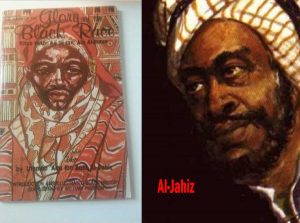
Al-Jahiz
Their achievements are even more impressive considering that they occurred at the height of the Abbasid Empire. An Empire that presided directly over Iraq, Mesopotamia, and Western Persia, and indirectly over territories from North Africa to Central Asia, and from the Caspian Sea to the Red Sea. After the Zanj were finally crushed the victorious Abbasid general Muwaffaq dismissed all claims recognized their strength and incorporated thousands of Zanj into his own government forces.The effects of this powerful rebellion would echo in the Arab world, dampening all attempts at mass labor enslavement until the 19th Century when European markets where furnished with spices and coconuts from Arab-controlled Zanzibar.
The 9th century African Muslim author Al-Jahiz, wrote a book entitled Risalat mufakharat al-Sudan ‘ala al-bidan (“the Superiority of Blacks over Whites”), in which he stated that Africans:
..have conquered the country of the Arabs as far as Mecca and have governed them. We defeated Dhu Nowas (Jewish King of Yemen) and killed all the Himyarite princes, but you, White people, have never conquered our country. Our people, the Zenghs revolted forty times in the Euphrates, driving the inhabitants from their homes and making Oballah a bath of blood– Al Jahiz
Blacks are physically stronger than no matter what other people. A single one of them can lift stones of greater weight and carry burdens such as several Whites could not lift nor carry between them. […] They are brave, strong, and generous as witness their nobility and general lack of wickedness — Al Jahiz
Arab and Turkish history is littered with furious African uprisings. One other notable battle echoes in Arab history until today and was referred to as “ the battle of the Blacks ” which occurred by loyal Fatimids against Saladin forces in Egypt in 1169.
INDIAN DIASPORA | Kings in Bengal
The Siddi, also known as Habshi (derived from Habesha, a general term used for Ethiopians but applied in some instances to Africans in general in the Indian Ocean world), Siddi are an Indian and Pakistani ethnic group of Afro-Arab approximately 55,000 in number. Most Siddis, are descendants of enslaved Africans, sailors, servants and merchants from East Africa who arrived and became residents in the subcontinent during the 1200-1900 CE period. Some Indian Siddis are descended from Tanzanians and Mozambicans brought by the Portuguese. A large influx of Siddis to the region occurred in the 17th century when Portuguese slave traders sold a number of them to local princes. Siddi gained a reputation for physical strength and loyalty and were sought out as mercenaries by local rulers, and as domestic servants and farm laborers. [4]
ISLAM AND AFRICA
Islam was founded in a multi-ethnic Arabia which lay 22km of the coast of the African continent. Prior to the rise of Islam, Ethiopia, a superpower of that time, had annexed modern-day Yemen and parts of Saudi Arabia for centuries. The Qur’anic accounts of the mighty forces of the Ethiopian general Abraha, who marched towards Mecca with an arsenal of elephants, this testifies to the power of the ancient Ethiopian Empire.
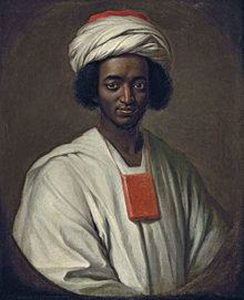
Bilal-ibn-Rabah
Islam was a religion inseparable from trade relationships and Africa and Arabia were old partners in trade so it is no surprise that Africans were among the first handful of people to accept the new religion brought by the Prophet Muhammad. It is said that when Bilal the Ethiopian, one of the most revered legends of Islam, first heard of Islam he called it the ancient religion. The call to pray which echoes over Muslim lands today was first carried on African lungs (by Bilal).
Islam became a permanent feature in Africa when the prophet Muhammad in 612 sent the first group of the early Muslims to be protected from Arab persecution by the Negus of Ethiopia; this was the first Hijirah. Islam was thus spreading in Africa before it even reached Medina.
It is important to note that while Islam generally disseminated in Africa peacefully it took wars, such as the Riddah wars, to conquer the Arabs into accepting Islam. In the mid-tenth century during the rule of the Umayed Caliph Abdul-Rahman III (929-961), Muslims of African origin sailed westward from the Spanish port of Delba (Palos) into the “Ocean of darkness an fog.” They returned after a long absence with much booty from a “strange and curious land.”
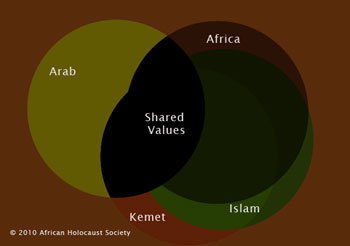
Identity model of similarity
It is evident that people of Muslim origin are known to have accompanied Columbus and subsequent Spanish explorers to the New World. It is reported that the descendants of Kanka Musa of Mali made an epic voyage with a 2000 strong fleet in search of the Americas–the outcome of that journey is unknown to us. Recent linguistic, cultural and archaeological finds in Brazil and Peru offer documentary evidence” that West African Mandinka Muslims explored the early Americas. Islam spread across to West Africa (by African traders such as the Fulani people) from as early as the 8 th century by African traders and was firmly established by the 11 th century. The peaceful non-obstructive course Islam took in West Africa was mainly because those propagating the faith were culturally and ethnically identical to those receiving it. Also the indigenous African had many features in common, such as animal immolation, communal pray, celebrating ancestors, circumcision, polygamy, dowry bride gifts, and the spirit or jinn world. The African spirit world of Bori and Zar was bridged to the Islamic world of jinns who like African spirits could be friend or foe.
Such similarities between Islam and indigenous African religions facilitated a general peaceful conversion and religious tolerance in West Africa. Islam hence left African culture uniquely African and a traditional African Sufi Islam was formed over the centuries. This brand of Islam in time even reshaped Islamic culture in the lands beyond Africa.
Diop: The primary reason for the success of Islam in Africa, with one exception, consequently stems from the fact that solitary Arabo-Berber Travelers to certain Black kings and notables, who then spread it about them to those under their jurisdiction, promulgated it peacefully, at first… What is to be emphasized here is the peaceful nature of this conversion, regardless of the legend surrounding it. (Pre-colonial Black Africa, page 163.)
Asante: The religion of Islam made each Muslim merchant or traveler an embryonic missionary and the appeal of the religion with its similarities to the African religions was far more powerful than the Christian appeal. (Asante, Genocide in Africa 1991 10) Diop: The Arab conquests dear to sociologists are necessary to their theories but did not exist in reality. To this day no reliable historical documents substantiate such theories. ((Pre-colonial Black Africa, page 102)
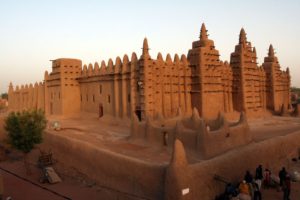
Djeanna Mosque in Mali
When Islam proliferated in West Africa around the 9 th century, one of the first universities was founded by African Muslims. It was called Sankore, Arabs and others came to Sankore which was built in Timbuktu to learn from the African erudite who lectured on Islamic belief, Islamic jurisprudence, astrology, science, and many other subjects. Timbuktu was reputed for African erudition where books and those who traded in books were the wealthiest elites of the merchant society.
The bulk of African history after the Ancient Egyptians Medew Netjer , was written in the Arabic language by both Africans and Arabs. The Arabic script also served as an agami to write languages such as Swahili, Wolof and Mande. For thousands of years Arabic served as the international language of trade as English is today. Some of the hidden histories of Africa are locked in as many as 700,000 Arabic manuscripts written by ancient African scholars. One of these the Tariq-ul-Sudan, details the history of Islamic West Africa, but this manuscript remains inaccessible to non-Arabic speakers.
19th CENTURY BOOM
“If (all types of men) are taken, from the first, and one placed after another, like the Negro from Zanzibar, in the Southern-most countries, the Negro does not differ from an animal in anything except the fact that his hands have been lifted from the earth,–in no other peculiarity or property,–except for what God wished. Many have seen that the ape is more capable of being trained than the Negro, and more intelligent.”
Nasir al-Din Tusi (1201-74)
During the 19th century, the Arab slave trade took a brutal turn. The Portuguese had destroyed the Swahili coast and Zanzibar emerged as the hub of wealth for the Arabian state of Muscat. By 1839, slaving became the prime Arab enterprise. The demand for slaves in Arabia, Egypt, Persia and India, but more notably by the Portuguese who occupied Mozambique and created a wave of destruction on Eastern Africa. 45,000 slaves were passing through Zanzibar every year.
During the nineteenth century, the East African slave trade grew enormously due to demands by Arabs, Portuguese, and French. Slave traders and raiders moved throughout eastern and central Africa to meet the rising demand for enslaved men, women, and children. Portuguese slaving accounts for a large influx of Siddis to the region 17th century when Portuguese slave traders sold a number of them to Indian princes.
Between conflict and cooperation, it is perhaps the single agent creating a boom in Arab activity in Africa. And to satisfy this demand the Arabs hunted deep into the interiors of Africa, they following ancient trails from Bagamoyo, Kilwa, Tanga, where terror and destruction followed in their wake. The Arab plunders met with savage resistance, which meant that the trade had a very high mortality rate. Many documents speak of the roads littered with the weak and the dying, the abandoned and the maimed, left with yokes around their necks. Many as in the case of Tsavo, Kenya became food for lions. Children who became a burden to the coffle gang were brutally murdered in front of their mothers.
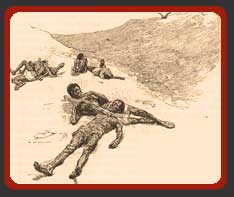
Left to die
The likes of Livingston would have witnessed this devastation first-hand but history penned by Europeans recorded it as an endemic characteristic of Africa, as opposed to a very recent genocide that was previously unprecedented in African history. Livingston was the precursor to colonialism, (David Robinson 2004) the colonial template was written on salvaging heathen souls for Jesus and civilizing them to be the cultural stepchildren of Europeans. Livingston is portrayed as the great White hope who delivered Africans from this hell.
Thus in the name of “humanity” Europeans, namely the British and the Belgians, conquered Africa to destroy Arab slaving. For Africans one horror was traded for the horror that would deliver the mortal blow- Colonialism.
ZANZIBAR REVOLUTION – BLOOD BATH
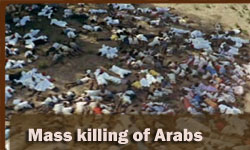 The legacy of the slavery in Zanzibar produced similar peculiarities to Atlantic slaving communities. And just like in the Atlantic, rebellion and violence continued to impact the viability of the system. The final page on Zanzibar came after Zanzibar was given full independence in December 10, 1963. The first government was formed under Sheikh Shamte but the sultan remained in place.
The legacy of the slavery in Zanzibar produced similar peculiarities to Atlantic slaving communities. And just like in the Atlantic, rebellion and violence continued to impact the viability of the system. The final page on Zanzibar came after Zanzibar was given full independence in December 10, 1963. The first government was formed under Sheikh Shamte but the sultan remained in place.
On January 12, 1964, the conservative government was overthrown in a bloody revolution led by John Okello (A Christian from Uganda) and replaced by a leftist regime under Sheikh Abeid Amani Karume (1905-72). Thousands of mainly Arabs and Indians were massacred in riots, and thousands more fled the island to Oman. Immediately after the revolution, Karume signed a pact with Nyerere uniting Zanzibar and Tanganyika to form The United Republic of Tanzania. Ending 200 years of Arab social-political and economic dominance in Zanzibar. The Zanzibar civil service, for example, became an almost entirely African organisation, and land was redistributed from Arabs to Africans.( George Triplett) The revolutionary government also instituted social reforms such as free healthcare and opening up the education system to African students who pre-revolution occupied only only 12% of secondary school. The day is commemorated on the island each year with anniversary celebrations and a public holiday.
The government following the revolution of Zanzibar of 1964 was pro- Africans and anti-Arab/Indian. The centuries of oppression had finally tipped over. All claims of the Shirazis (A privileged Swahili sub-group with claims of Persian ancestry) were dismissed unless one could still claim to be a Shirazi, he/she had to accept being an African first and Shirazi second. The first president, Abeid Amani Karume proudly presented himself as an African. He went on to institute forced marriages between Arabic and Indian women. A reverse of the pattern of miscegenation which had been a bedfellow of the Arab slave trade.
SLAVING ZONES & TARGET GROUPS
Nubia and Ethiopia were slave zones in Africa. in the 15th century, Ethiopians sold slaves from western borderland areas which often ended up in India, where they worked on ships or as soldiers. They eventually rebelled and took power (dynasty of the Habshi Kings in Bengal 1487-1493). The Sudan region and Saharan Africa formed another “export” area. Both in Sudan and the Ethiopia region (including modern Eritrea) linguistics is evidence of the consequences of this trade.
In Amharic, Bariah is used as a derogatory word for non-Habesha [4] ethnic groups who were traditionally targeted for enslavement, for export or local usage.
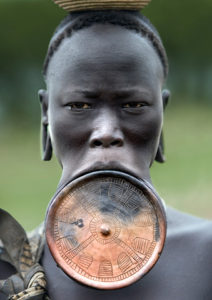
Mursi Lip Piercing
Being Muslim and Africa was a factor that might exempt a group from being enslaved, although sometimes the conquering group would just find some reason to renounce their Islam but citing occurrences of shirk ( شرك širk) taking them outside of Islam and hence making them a target for enslavement. Somalia did not supply slaves — as part of the Islamic world Somalis were nominally protected by the religious tenet that free Muslims cannot be enslaved. [3]
Because the Arab trade favored women, it is said that some ethnic groups disfigured their faces (Mursi lip plate) in an attempt to dissuade enslavers. This is however a baseless Eurocentric anthropological fringe theory which is typical of ignorance of African culture. Europeans see what is perceived as “ugly” and assume it is universal and hence seek reasons (from their own culture) why someone would practice certain rituals
MYTHS ABOUT THE ARAB SLAVE TRADE
Any study of history has to be both a study of historical writings, and sociological patterns, past and present. When Greeks wrote about the Phoenicians, their writings became the body of historical perception towards these ‘people of the sea.’ We still see the Phoenicians (exonym name) through the eyes of the Greeks: To the victors of war belong the authorship of history.
However, without an appreciation of the social relationship between the Greeks and the Phoenicians, we are left with an imbalance.Jewish historical traditions carried in Exodus, narrates of a hatred for their oppressors, the Ancient Egyptians. The writing style and the subsequent glorification and defamation all speak to the social-politics of the period in which the Exodus was written. When European explorers first uncovered the splendor of the Cushitic civilization, they automatically documented the evidence they found as “outside of African origin.”
The social pre-assumptions of the day influenced the basis of their academic study, leaving nothing but mis-history. It is thus critical to study the sociological aspect of who is writing history and the natural agenda behind those casting the pen. The politics of our time is a factor in determining perspective. When the genocide in Rwanda broke out it was reported as genocide between two groups; ethnic Hutus and ethnic Tutsis, both groups are predominantly Christian yet this was never a point of debate — anywhere. However when a similar situation broke out in Darfur it became ‘Arab Muslim and blacks.’ Once upon a time they would have stressed communist forces now it is the mysterious omnipresent Islamistist. The politics of our time is a factor in determining perspective.
COMMON MYTHS CORRECTED
- The history of the Arab trade is not a new study, as many shock-academics would have us believe.
- There was no great Arab invasion of West Africa, as with North Africa, the myth of the destruction of Ancient Ghana was a Berber folktale. 1591 marks one war between the Pashalik of Morocco who defeated the Songhai, and made Timbuktu, rather than Gao, their capital.
- It was not in the interest for Arab slavers to convert enslaved Africans to Islam, because being Muslim granted the enslaved Africans more rights. And if the people they were capturing were already Muslim it would “delegitimize” the capture.
- Not one single Arab ship was responsible for bringing any African to the Americas.
- Because a trade is older does not mean it is more destructive.[2] An old trade that trickles has next to no impact on the development of Africa. But 300 years of the Atlantic Trade (which might be shorter) has claimed over 20 million victims (as a estimate). Therefore it is a deliberately dishonest to make duration a central talking point.
- Arabization and Islamization sometimes were competing objectives, despite having a correlation, they are not synonymous; they are not one and the same thing.
- It is a myth that Muslims have not attempted to deal with this history. This site has been the no 2 site on Arab slavery in the world (after Wikipedia), the author is a Muslim. Naturally human nature causes a softened approach (apologist). The language barrier means it is next to impossible for someone in America to have a serious discussion about what the Islamic world engages in as a conversation point. Also Islam is not the Roman Catholic Church it has no “head” to issue dictums.[Afro-Arab]
- Not one single border in modern Africa was created by Arabs. Arabs generally related to pre-existing nation structures in Africa. Or in the case of the Swahili coast limited their conquest to the coast, avoiding the hinterlands.
- An estimated 10 million enslaved Africans crossed the Red Sea, Indian Ocean, and Sahara Desert from 650 to 1900 (more than a 1000 years), compared to more than 12 million that arrived official across the Atlantic from 1500 to 1900.) No historian can offer anything beyond speculation for this number since records do not exist anywhere to support any claim either way. It is clear that some, especially the work of Jewish orientalist Paul Bairoch, is busy exaggerating these numbers to shift responsibility from European (Jewish and Christian) slavers to Arab Slavers. Thus making the Atlantic slave trade as minor as possible against the age old Arab Slave trade.
- Islam did not destroy African matriarchal societies as Africa was not a monolith of matriarchal societies to begin with. Cultures are not static, and cultures and gender dominance have always fluctuated in human history.
- Islam is not an Arab cultural invention, but a religion born in a multi-racial Arabia; it was actually perceived as “foreign” by most Arab “tribes.” Islam in Africa is just as old as Islam in Arabia. Islam actually flourishes today because of the legal protection the king of Ethiopia gave it. The ideological foundation of the 3 Abrahamic faiths is African in origin. It is a denial of African history and agency to deny the significance of Africa in the history and formation of the Islamic faith. It is ony an enslaved mind that rejects its own historical claims allowing others full credit. Later Arab and Turkish dominance lessened this history, but it is an African history.
- Arab is not a racial term, to say Arab is almost like saying American: thus, people classified as Arab today, could have been Caucasian (white people), Jewish, Asiatic or even Arabized Africans.
- Arab slavery did not destroy African sovereignty within its kingdoms. Except in Zanzibar and along the Swahili coast. While European slavery ultimately lead to colonialization and hence the collapse of African kingdoms.
- There was no Arab invasion or destruction of “black” African Egypt. Kemet was concluded centuries before by Persians, then Greeks and then Roman invaders. The 1075 conquest of Ancient Ghana by the Almoravids was done by African Berbers. The sacking of Timbuktu by Morisco mercenaries armed with European-style guns in the service of the Moroccan sultan in 1591.
- There is a low African Diaspora in the Arab lands due to the proliferation of miscegenation, the dynamics of being classified as an Arab, and the degree or easy of Arabization. See Mazrui making of Arabs and new Muslims
- Islam did not bring the Arab slave trade. However, it did respond to it with laws of manumission. These laws were later generally ignored and misinterpreted thus protecting the privilege slaving brought.
- Arabs enslaving Africans would not be interested proselytism as this would grant the enslaved Africans privileges. Thus slaving and the spread of Islam were in direct conflict and slavers played an opposing role in the Islamization of people (Murray Gordon, “Slavery in the Arab World.”)
- Muslim and Arab is not the same thing.
- Turks are not Arabs, Persians are not Arabs. Berbers are not Arabs, hence the Trans-Saharan or the Ottoman trade is not an “Arab” Slave Trade.
- Arab slaving was not the oldest slave trade in the world (see India and China). It however, was older than the Atlantic Slave trade, but it was scattered and a low priority until the 19th century.
- After the 19th century, the horrors of procuring Africans, was the most inhuman aspect of the trade, with castrations, transportation and violent slave raids being the main sources of mortality.
- The Arab slave trade in the 19th century was economically tied to the European trade. The Portuguese (on the Swahili coast) profited directly and were responsible for the boom in the Arab trade.
- The Arabs did not see all Africans as being of a unified “Black” race.
-
- Arab enslavement did not only target Africans. But became more racist towards Africans as time went on, eventually being a mirror of European anti-African attitudes
as time went on.
- Arab slavery was primarily domestic, and only in the 19th century was it a mainstay for some Arab economies.
- Arab Slavery did not leave the social legacy that the European trade continues to leave: prisons, poor education, mental health, etc.
- The Arab slave trade had a negligible impact on most Africans in the Diaspora today.
- Zanj does not mean all Africans. This is a assumptive linguistic superimposition.
- Muslim Africans (and Christians) were not the main suppliers of captives for the Americas. Dahomey and the Asante kingdom Oyo, Benin, Igala, Kaabu, Imbangala, The Aro Confederacy, (includes Ovimbundu)were the main suppliers.
- Many African Muslims Kingdoms were the main aggressors to European advances on the continent. Umar Taal, Malick Sy, Ahmadou Bamba, Samory Toure, etc.
In a world which has the Islamic faith in the spot light we must add there is no accident that these topics are flooding YouTube, and black tabloids , but this article exist long before all of that. 50 years ago Germany had similar synthesis against the Jews.
THE FIRST MISTAKE: ARAB?

A “caucasian” Arab
Arab people (Arabic: عربي, ʿarabi) or Arabs (العرب al-ʿarab) are a pan-ethnicity of peoples of various ancestral origins, religious backgrounds and historic identities, who identify as Arabs on one or more of linguistic (1st language speakers of Arabic), cultural, political, or genealogical grounds (less relevant in our modern times). People who identify as Arabs, often have a a multiplicity of identities. It is similar to Hispanicity which is independent of race, and constitutes an ethnicity category, as opposed to a racial category. Being Arab has been made even more condensed because of US foreign policies sweeping definition (in ignorance) of anyone with brown skin who happens to be a Muslim. Ironically in the USA many of these people are classified as White. This process of “Arab” identity by the “other” started when the word “Middle East” started being used as a political term invented by the British and French in early 20th century. As stated before, the entire term collapses even people such as Kurds who have a distinctively different genetics, language and history. Again the key unifying factor in this generalization is the Islamic faith.
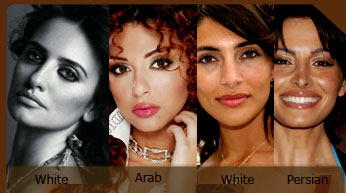
White, Arab, Persian, same “race” difference only political
A large population of Arabs are White (no less physically white when compared to Spanish or Italians). However because of the classification of whiteness which is sensitive to consanguinity, religion, politics and culture, some Arab groups are non-white politically and socially while being white physically
The first written historical occurrence of the term “Arab” occurs in an Assyrian inscription of 853 BCE, where Shalmaneser III lists a King Gindibu of mâtu arbâi (Arab land) as among the people he defeated at the Battle of Karkar.
The first mistake or misnomer in the study of the Arab slave trade is the term “Arab.” The so-called Arab trade is not solely an Arab enterprise. The term for political reasons is used in that context for “saleability.” It is a terrible day for history when convenient packaging labels are employed for ease of academic and political digestion. The majority of people in Iran are not Arabs, the same for Morocco, Tunisia, Western Sahara, Mauritania and Libya. The process of Arabization has greatly expanded the term Arab to many non-Arab groups such as Palestinians and other groups from the Lavant. Results of a DNA study by geneticist Ariella Oppenheim appear to match historical accounts that Arab Israelis and Palestinians, together as the one same population, represent modern “descendants of a core population that lived in the area since prehistoric times”, albeit religiously first Christianized then largely Islamized, and all eventually culturally Arabized. So we must also factor in that most Arabs today are actually Arabized people (musta`ribah) .
The blurring of racial definitions in historical Africa has always been mishandled in European institutions leading to the complete mangling of reality. For example, the Sanhaja (considered by some to be “Arabs”) would have been seen as a different race by the Mande, but this is equally true for their perception of the Fulani or the Tuareg ethnic groups. Popular Eurocentrism has created hard definitions such as black, and Arab based upon their worldview of “other.” Terms such as ”oriental trade” “Islamic Trade” as Patrick Manning states are implicitly erroneous. The tradition in Western linguistics of lumping is one of the key aspects of historical distortion, not lost on the study of Africa or Arabia.
CONTROVERSY | PLAYERS AND PLAYED
The first casualty of war is the truth –Senator Hiram Warren Johnson
By understanding the interest groups around the issue of Islam and Slavery, Arabia and slavery the discourse becomes easier to understand:
Europeans Christians
Operating a hi-tech sophisticated academic war to “blame share” and re-focus African energy on a slave trade that did not affect the African Diaspora. Islamophobia is a critical strategy to curb the power of Islam within African communities especially in the Americas (Nation of Islam etc). The “Black” Islamic threat is therefore repelled by demonizing Islam and the Arabs. Creating suspicious and destabilizing Arab-African unity. African Christians usually just go along with any and everything Europe says.
Afrocentrics
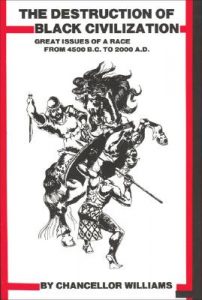
Black Victimhood
Quick to react off anything Eurocentrism throws their way. Quick to find yet another story to prove how they are history’s greatest victims. Hence pointing out “evil” and scoring fast-food academic points with a large unread populous who are volatile and quick to hate the new devil in town . They celebrate the most pseudo -historical statements one could believe ” The Destruction of Black Civilization (US, Third World Press, 1987, p.207), claimed that: ‘In the Muslim destruction of the Songhai empire, the main centers of learning with all of their precious libraries and original manuscripts were destroyed first.’ — The question of “what was the religion of Songhay gets skipped to nail home a bigoted distorted history. Most are very slow at realizing the complex game being set-up by Europe, whose primary purpose is to destroy any unity between Muslim Africa and the rest of Africa.[3]
Muslims (general)
In constant denial about the horrors of the past as well as the ongoing racism in Muslim communities towards Africans. Forever adding flowers to hide the smell of a rotten corpse. There is no weakness in admitting the errors of the Islamic past. So they are slow to react and realize the scope and nature of the Arab Slave trade. As opposed to research and honesty they would rather demonize anyone (especially other Muslims) who dare to discuss or expose these facts. While they have not tried hush-tactics they have tried to bury their head in the sand. This avoidance has generally done Muslims and Islam a disservice. Update: Ta-Ha, a Muslim Indian publisher from the UK has recently released a book by a young African Muslim exposing the racism inside Muslims communities. This has been a positive step in the right direction. Many Arab news stations have featured this work on this page to create a discussion about Muslims , Slavery and racism.
Muslims (African/Black)
African Continental Muslims are generally socially out of step with the post-60’s Black Conscious movement. Because of the complex nature of Islamic identity and the separation Muslims practice it has compounded the problem. Many African Muslims have been Arabized and are not open to alternatives. Arab culture is seen as better. Speaking Arabic is seen as better. Much social progress is needed to educate these populations to the broader African consciousness movement. This is not helped when Afrocentrics demonize Islam. And since Muslims are the majority Afrocentrics are digging their own grave.
JEWS
Jews (European) Are part of the European plan, especially with an anti-Israeli sentiment on the rise by people like Farrakhan. And just like the Muslim communities, their hush tactics on Jewish involvement in slavery have backfired causing even more attention to be drawn to their participation. But they are silent agents in funding scholarship which plugs the Arab slave trade on the African agenda table.
INHERITED & SUPERIMPOSED PERSPECTIVE
The first pitfall of many African academics, especially African-American ones, is to pretend that by knowing about Slavery in the Americas automatically gives them an insight into Slavery in Arabia. The question is of transferred or superimposed experiences. Thus the horrors of being a slave in America and all the dynamics of that system are superimposed onto a world and reality they have no idea about. But simply transference of experiences where Arabs take the place of Europeans is a disastrous academic venture, for the complexities of Slavery in Arabia (place and time being two factors) is radically different, just as generalizations cannot be used to sum up systems of servitude in Africa. A world as complex and ancient as the African-Arab one cannot be navigated from European-controlled Universities by a people who live and breathe in a Pax-Americana reality. When we collapse the Islamicand pre-Islamic religions, the surrounding languages, the culture(s), the ethnic diversity, into one string of unreferenced diatribes we are committing academic heresy.
The argument that Islam destroyed the gender roles in Africa is very problematic because it is wrapped in the influence of a very Western position i.e. Islam removes Women’s rights. There was far more justice for the African women under Islamic rule of Songhai than in pre-Islamic Mali. This is beyond debate. There is far more justice with Sharia in Sokoto than in any time in that regions history. Uthman Dan Fodio paved the way for this debate around women’s equality by institutionalizing all kinds of educational reforms for women, reforms that were traditionally taboo in many African pre-Islamic cultures. So we must be careful in how we approach history and how we project our contemporary moment into a time machine and send it back into time. The very feminist accusation ignores the reality of the pre-existing condition of African women’s oppression in indigenous societies: that forces marriages, the right to divorce, the right to dowry, the right to inheritance, protection during warfare, etc.
In Mauritania, the Haratin account for as much as 40% of the Mauritanian population. They are sometimes referred to as “Black Moors”, in contrast to Beidane. The Haratin are Arabic-speakers, and generally claim a Berber or Arab origin, which is contrasted against other African peoples in southern Mauritania (such as the Wolof and Fula people who have populations in Mauritania). The Haratine, consider themselves part of the “Moorish community. But where it becomes problematic is because they are “darker” in color, they are assumed to slaves brought from “black Africa.” So powerful is the theory of “two” Africa’s that reality is twisted to accommodate its validity. Every study is looking at Africa through the lens of “Black and White.” It is therefore never considered that these “black” populations, like the Kanuri, who migrated South from North Africa, are native to the region. In a struggle to sustain colonial linguistics all forms of pseudo -anthropology is imposed on the African reality posing as mainstream studies.
THE POLITICS OF NUMBERS LOST
If we understand the table of players, in what is more a political war than an academic war, we will quickly find a balance. It is the aim of the Muslim to limit numbers, it is the aim of everyone else to increase them.
The facts are every group is using the same limited sources. So it is amazing how many varied numbers come out of these limited sources. Felipe de Alencastro states that there were 8 million slaves taken from Africa between the 8th and 19th centuries along the Oriental and the Trans-Saharan routes. While it is suggested around 10 million people were lost, it must also be stated that no one can give a number on the 2000 year old forced exodus of Africans. The error again, which constantly must be stated in our modern times, is in attaching every non-European slave mission to Arabs and Islam . Not only Arabs were part of this, and certainly not only Muslims. The term Arab Slave Trade in the early period must be reworded to account for this. Perhaps it was an Old World trade.
There are some numbers floating around and all of this severs as alarmist academia. It is very simple mathematically: What was the total world population in the 7th century? What was the total population of Africa? An educated guess says it certainly was not 1 billion, it was also not 50 million. So unless academics such as John Alimbillah Azuma and Paul Bairoch have discovered time travel, the calculations are all guess work.
Now if we know the general population over the last 2000 year period how do we account for a sparsely populated continent losing upward of 100 million people?
And where did they take these people from? Where did they go to? Did they vanish into thin air, or where they eaten on arrival? There would be some heavy evidence of ships transporting people, and other artifacts associated with mass exoduses of this kind, even a constant trickle would leave some tell tale signs, even evidence in ancient cultural memory. And if the suggestion by popular Afrocentrism of mass genocide, what would be the motive for this? Arabs go all the way to Africa and capture people and then kill them for fun. The ‘victim’ mentality needs these stories to explain the global failure of African people. And while both Arab and European exploits are destructive it is critical to deal with the double door of African agency. So only two possibilities for the lack of an African Arab Diaspora as proof that the Arab slave trade came anywhere near the Atlantic European system:
- They were victims of genocide: (Makes no economic sense)
- They were absorbed into the Arab gene pool: (Hence there was no 2nd and 3rd generation to enslave, unlike in the Americas)
There is no escaping these two possibilities. And if the enslaved Africans became absorbed then that history ended there. And none of the above possibilities accommodate the large numbers some European scholars have proposed. The best we can say is “We do not know”, but we do know with far more certainty the legacy of the European trade in Africans. It explains almost everything about why the world is dominated by White people.
We find the impact of the Arab slave trade was associated with an 19th century boom, that serves as a key area towards a historical understanding of the Arab slave trade in Africa. The assertions that 80% mortality would suggest that Arabs were very bad at calculating profit and lost. How could they afford such losses and have a viable trade? Anyone can cast alarmist numbers into the wind to sell a book. Clearly the larger the number the better for European interest.
It is amazing how scholars have always manage to make the numbers higher than the trade their ancestors engaged in, sometimes so high it exceeds the population of Africa at that moment in history. Below are opinions from Segal and Lovejoy.
- From 650-1600 CE
- Citing Ralph Austen:
- Trans-Saharan: 4,820,000
- Red Sea: 1.6M
- East Africa: 0.8M
- TOTAL: 7.22M shipped
- Citing Paul Lovejoy: 3.5-10.0M shipped
- Citing Ralph Austen:
- 17th Century
- Sahara: 0.7M
- Red Sea: 0.1M
- East Africa: 0.1M
- TOTAL: 900,000 shipped
- 18th C
- Sahara: 0.7M
- Red Sea: 0.2M
- East Africa: 0.4M
- TOTAL: 1,300,000 shipped
- 19th C
- Sahara: 1.2M
- Red Sea: 0.45M
- East Africa: 0.442M
- TOTAL: 2,092,000 shipped
- TOTAL: 11,512,000 shipped
WHOSE SOURCES
We must begin our journey of historical exploration by asking what are the academic sources for European, Arab and African systems of enslavement. However, if the agency in history is solely a European enterprise, then we have nothing to balance it with. If the Arab Slave Trade is only seen through the Zionist eyes of the Jewish orientalist Bernard Lewis then as Edward Said said Islam will be treated as a monolithic entity without the nuance of its plurality, internal dynamics, and historical complexities. Edward Said goes on to define orientalist as a political intellectualism bent on self-affirmation rather than objective study. The same can be said for some aspects of Afrocentrism, which reads Eurocentric writings and insert political objectives; none read Arabic or even accessed the sources.
The earliest European sources on anything Arab started by the likes of João de Castro (around 1538), prior to that the sources are all Arab (oldest being Al-Masudi ) or African (African, Ajami and Ethiopian). Oral traditions add to, complement or contradict our understanding of this study, but oral tradition does not tell us what happened 1000 years ago. We also have genetic evidence, history of large demographic shifts in the archeological records. But that is it. So no one, regardless of if it is Bernard Lewis or Muhammad Shareef has access to anything beyond this. (This author depends on Shareef for accurate translation of Arabic text)
|
After enslavement, it was appropriate to find new ways of exploiting Africa’s resources: in came colonialism. The “moral” interface, which facilitated this exploitation, was Christian missionaries, using religion (again) as a scapegoat for colonial rule.
Having to account for their past in enslavement, they then enterprisingly started pointing fingers in two principle directions, Arab and African. As Muhammad Shareef outlines, European drawings, started to skillfully portray slave raiders as Muslim African or Arab. So today, when we look at our understanding of Africa, we find that the majority of these sources are European bias, and this is the viewpoint that has been subsequently inherited–without question.
Through pure ignorance and lack of historical evidence, many of the “African” scholars embrace myths about Africa fed to them from strictly European sources. Most heavily relying on the interpretation of Eurocentric scribbling about a continent they did not understand. The same prejudice that washes the notion of Africans enslaving Africans is the same mythology, which plagues the study of Arab enslavement of African people. The above statements are not meant to exonerate nor apologize for inter-African brutality or Arab enslavement. But are intended to set a new tone towards the study of what actually happened in Africa. It is the establishment of a new bases of perception that is critical, not the validity or denial of any slaving system; true or false, African or Arab. The same “sin” the so-called Arabized African is guilty of, in defending the brutality of Arab enslavement, is the same sin the “Afrocentric” is guilty of, when defending African-to-African enslavement. The crime is the distortion of truth. And if truth is distorted for personal agendas then the ultimate fruit that should come from studying our human history is lost to the wind.
NOMINAL MUSLIMS?
A re-emerging term that is awkwardly re-asserted in history is that of the nominal Muslim in African history. Unless we are saying Islam itself is an absolute value that has degrees of purity set against some Saudi Arabian standard then it is impossible to discuss the spiritual purity of Islam as expressed by one culture against another. People of Islamic heritage are generally called Muslims. Clearly, some societies are more adherent to the doctrine of the faith; say Nigerian Muslims verses, Islam, in Turkey. Some claim African Muslims blended ancient African traditions into the “pure” Islamic they encountered coming from Arabia. Every single form of Traditional Islam absorbs aspects of its culture where ever it goes. So In Bangladesh, we see the Barelwi flavor of Islam, bringing in aspects that are part of pre-Islamic Bengali spirituality, and again in North Africa and Saudi Arabia. The customs and cultures of Arabia inevitably get blended in with the so-called mainstream Islamic theology. So this pattern is not only true for Africa, nor is it unique to the Islamic faith (see religions of Brazil and Hati). It’s not the place of history to hold up some litmus test to religions and weigh them against some imaginary standard of purity. Because it supports the idea that everything the Saudi Arabian brand of Islam does is 100% and anything which varies from this is impure. Sonni Ali Ber may have been less religious in zeal than say Uthman Dan Fodio but both of them were members of the Islamic faith, and thus historically Islamic.
When Muslims were trading slaves or today creating acts of terror no one calls them nominal Muslims to disassociate them from Islam.
SEEKING TRUTH IN A SEA OF LIES
Why is someone telling you about the Arab slave trade? And we have to start there, with intentions.
People discuss history for a number of reasons, truth– is rarely one.
Most Westerners would not know an Arab if they bumped into one in Mecca. Confusing Turks, Indians and anyone with brown skin as “Arabs.” 80% of those Arabs that engaged in slaving were racially White people. Arab is a political term, there is no Arab race. Arab is an easy way of saying people who are not members of the EU, so soon Turkey will be exempt from this stigma.
Once again, this article is not to verify or deny the existence or the extent of the Arab slave trade or to deny or confirm the dynamics of “slavery” among African people. The aim is to highlight, as a disclaimer, a point where history has become distorted. The case being argued is that we should become sensitive to this in our pursuit of the truth. There is no doubt the Arab slave trade scarred Africa, but the true dynamics of this as expressed in contemporary academic circles is vulgarly malicious, with the sole intention of vindicating the actions of Europeans by setting up a new “devil.” Streamlining their anti-Islamic sentiment with the uprooting of Africa’s Islamic past. We must be astute to the politics of our time.
BIAS?
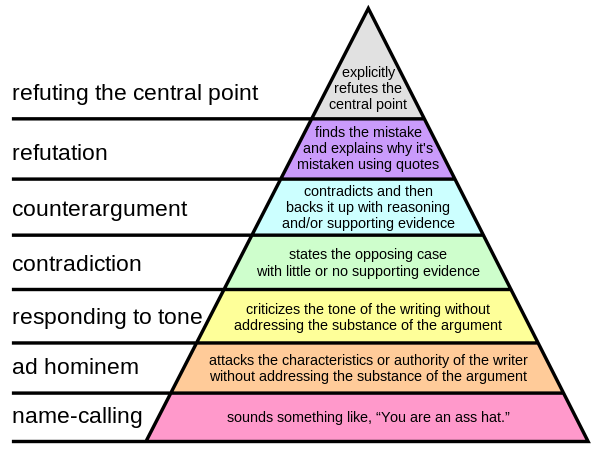
Level of Disagreement
As for accusations of bias, that is sometimes a little laughable, because is there a scholar without bias? Now there is something called biased scholarship where every statement takes you in one direction and defends and cherry-picks facts to create propaganda. But 90% of the time when someone complains about bias what they are really saying is I do not like what you are saying as it is not lining up with what I want to hear. Whether Europeans and Arabs enslaved Africans or they did not, stating that they did is not biased, it would be biased if we left off the fact that Africans were to some degree responsible for their enslavement and continue to be agents of their own demise in our modern times. So as long as someone is giving a full disclosure the accusation of bias is just a lower-level argument not worthy of a response. How is the article or author biased? Because he is Muslim, then the Christian, Afrocentric, or European authors are free from bias (in short, only Muslims have a bias). Is it biased because they do not follow the anti-Islamic sentiment seen all over the internet? Are they biased because they redirect focus to the European trade in enslaved Africans? So if this is the case, is the article that slams Islam as the worse thing since Hitler less biased? Or the guy that states 200 million Africans were eaten by Arabs? Because if we like the noise over the balance then the accusation of bias is political and moot and no use to a progressive discussion. So this article is biased to all of those who came here, looking for confirmation of their own agendas, and did not find what they wanted. And if the sense of “defending Islam” is problematic, then “defending Africa” is also.
In the hands of man, religion continues to be a tool, for good and bad. But the major world religions make easier targets for casting accusations than obscure faiths in the belly of the Congo. However, the systems in indigenous Africa were also perverted. Punishment for minor crimes became immediately punishable by enslavement. The de facto system became enslavement for every foreseeable crime and sin. We cannot for personal reasons excuse one flaw and highlight another because it suits our argument. Slavery was a crisis for the world. It is testimony to the ugliest side of humanity. Where systems in the Qur’an and the Bible were defiled and used to justify the unjustifiable. A system so evil it presented a mother with the dilemma of which child she could sell to protect the others. A system that deadened all sense of humanity and righteousness from those professing to be subjects of God.
HIDDEN HISTORY
Knowledge concerning the Arab trade is not traditionally popular for many reasons when compared to the Transatlantic trade. The biggest reason is that Africans of the Americas (including the Caribbean and Brazil) were not affected directly by this trade. So naturally, people discuss slavery that is most relevant to them. Another reason for the obscurity is that there is also limited factual information on the subject. The period of the Arab trade predates the European system and was far more complex, the racial boundaries we accept today didn’t exist in those times. Egypt’s former president Anwar Sedat is considered Arab but he is half-African. His African ancestry does not reduce or violate his Arab identity, and vice-versa. When an enslaved
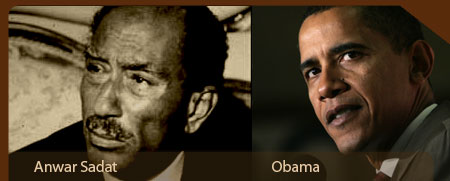
Obama and Sadat: Question of identity
woman became pregnant with her Arab captor’s child she became “umm walad” or “Mother of a Child” , a status, which granted her privileged rights, the child, however, would have prospered from the wealth of the father and given rights of inheritance. Again this system allowed for greater racial assimilation, hence the reality of a physical African Diaspora in Arab lands is very different from the African Diasporas in the Americas.
The Arab slave trade was not a trade limited to specific racial groups, although at times (later times) it appeared that way. By contrast, the odalisque (concubines) of the Ottoman Empire was majority European. The soldiers of the Othman armies were the European Mamluks stolen from Georgians, Circassians and Turkics. Africans were not the majority of enslaved people in these Turkish lands.
The hajj has demonstrated since ancient times that neither Africans nor Arabs considered physical barriers or long distances as insurmountable obstacles. Large numbers of African pilgrims never returned to their native lands as far away as Senegal. Instead, they settled throughout the Middle East, including present-day Saudi Arabia, Jordan, Palestine, Iran, Lebanon, Yemen, the Persian Gulf countries and Turkey. Eve Troutman adds:
“In the United States, of course, and the Caribbean, you had agricultural slavery. You had plantation slavery. In the Middle East, this was very rare. You did not see this certainly in the 18th and 19th century. So African slaves in Egypt would work in people’s households, would be part of people’s families, would live in the household, would not have a huge community of other slaves around them, but really would be surrounded by the family of their owners.”
CRISIS POINT
The primary crisis point the Arab trade poses for Muslim people is the illegal marriage between Islam and Arabism. Separation of these two topics is necessary for the sake of understanding history from an honest point-of-view. Unfortunately, among many Muslim communities the issue of slavery is a topic rather avoided or apologized for (in that order). The dilemma of “religion verses reality” expressed by the devout Christian is revisited here, where the less than divine aspects of religion cast hideous shadows. The Arab-African relationship is far older and more intertwined than the European-African one. The idea of religion over race has also presented a problem, as any Muslim Africans who would have sold other Africans to Arabs would have seen religious kinship, over racial kinship. Once again, we find African’s devotions to faith being an aspect of their downfall, both with Christianity and Islam. The argument is not to finger religion but to expose a terrible conflict, in the human condition, where the ultimate purpose of religion, righteousness and truth, are arrested and supplanted with misplaced loyalties.
ISLAM AND MUSLIMS
Mauritanian scholar Mohamed Diakho, who has a book in French called L’Esclavage en Islam, which says that the Qur’an actually does everything it can to get rid of slavery and that it is later interpretation of the Qur’an which, sort of ceding to the powers (the slave-owners), were complicit and complacent about slavery. So the tragedy with Islam; the revealed religion and Islam the practiced religion, highlights the same flaws that Muslims accuse Christians of having. For this reason, the religion of Islam and the actions of Muslims are at times two completely different studies. The social conditions of the time are a black hole for truth. Islamic theocracy is still in the hands of man, and if those hands chose to highlight the legality of Slavery before the Qur’anic legality of manumission, then we have the current legacy to which no apologies can be offered. Even today, the continuation of this barbaric trade still gets little response from Muslim communities. The quote by Halie Selassie is most appropriate:
Again, the human condition is the error and all the efforts of Christianity, Islam, Judaism, Candomble, Anago et al, seem weak in curbing the perverse selfish ungodly actions of man. And let us not limit our analysis to religion because in all systems the ruling race-class seek to protect their interest and are always reluctant/unwilling to surrender that which grants them an advantage over others.
ARAB RACISM
“[The sultan of Kilwa, East Africa] … was Father of Gifts because of his many gifts and deeds of generosity… This sultan is a very humble man. He sits with the poor people and eats with them… The gratitude of the people to the sultan increased at the evidence of his humility and graciousness.” Ibn Battuta, 14th century
Racism in Arab societies is more complex due to the long history of coexistence, but at the same time the racial ills remain generally untreated. It has to be noted that Arab racism today is usually more contained in societies which are Arab dominated, unlike European racism, which is less pronounced in exerting influence on the people outside of its spheres of influence. There is therefore less of a “post-colonial” racism in the Arab world. But we do see its afterbirth teaming up with the legacy of European colonization, and shaping attitudes in countries such as Sudan, Somalia, Zanzibar (before the revolution), and Mauritania among the elite. It is hard to sometimes separate what is because of European White supremacy and what is because of Arab supremacy, both have an inherent tendency to devalue all things African.
“Then I reached [a West African town]. This town had as its governor an excellent man, a pilgrim called Farba Sulaiman, well known for his bravery and tenacity…An Arab slave girl of his from Damascus came in to us. She was an Arab and spoke to me in Arabic.” Ibn Battuta, 14th century
But perhaps the most telling difference is while the Arab racism in academia (which was never dominant) has dropped off 100’s of years ago, the European discourse in corrupting, footnoting, washing out the history of Africans i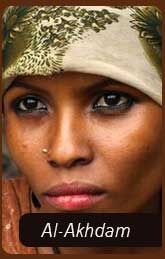 s 500-year-old burgeoning industry.
s 500-year-old burgeoning industry.
“But racism is unlikely to be erased overnight, either in Lebanon or in many other Middle Eastern countries where blacks are routinely looked down on. Racist taunts are often heard on Egypt’s streets, and in Yemen, darker-skinned people, known as al-akhdam (“the servants”), who make up perhaps 5% of the population, are confined to menial jobs and tend to dwell in slums. In Libya rebel militias often targeted darker-skinned people from nearby countries such as Chad and Mali and from countries further south, accusing them of being mercenaries of Muammar Qaddafi.“— Economist
Perhaps the lack of heavy oppression in the Arab world never created the need for a Civil Rights Struggle, or any serious African/Black consciousness. The issue of absorption allows a lot of room for an inferiority complex to grow, similar to much of the French Caribbean. You can belong to the master race in some shape or form. Hence racism is never challenged but flourishes. Racism in the Arab world is rarely vocalized like in the Western hemisphere, and the language barrier stops exchanges between Africans in Arabia and Africans in the West. Experiences are rarely compared again because of the cultural-language barrier.
The accusations against Eurocentricity are not lost on Arabized “Islamic” history. The tradition of subverting African history and making it a footnote or as Maulana Karenga said “a forgotten casualty” is not an exclusive European enterprise. From the legacy of the Arab Slave trade, it is clear that the social status of the African in Arabian societies has been obscured and belittled. The magnificent contributions of Africans to the formation of the religion of Islam and Islamic science are at best undermined at worst written out of history. For example, the first Hijirah (or flight) is recorded as the 622 Hijirah from Mecca to Medina; however, the most critical Hijirah from Arabia to Ethiopia was made in 612 (it is not even given the respectful title of Hijirah). There is no point in blaming a religion for this, for it was not the Qur’an or the prophet of Islam that institutionalized this racism. Guilt sits with those who inherited control of Islamic history: The same ones who interpreted a Sharia that favored enslavement over manumission. Still today African people are written out of Islamic history from every corner: by non-African Muslims, Eurocentric’s and Afrocentrics alike.. Volumes of books are written on Islamic empires and no reference is made to Sokoto, Mali, or Songhai (the largest African empire). The problem is the general lack of African agency in all aspects of history.
Despite all the brother and sisterhood promised in the canon of Islam, it rarely manifests itself in Muslim societies, there is an unimaginable degree of racial segregation. This is not a historical occurrence for in more ancient times interracial marriage was far more “tolerated.” But it must be stated that historically the spread of Isl am among the Berbers did not guarantee their support for the Arab-dominated caliphate. The ruling Arabs alienated the Berbers by taxing them heavily; treating converts as second-class Muslims and, at worst, by enslaving them. As a result, widespread opposition took the form of open revolt in 739-40 under the banner of Kharijite Islam. So Arabization has been a historical problem that has always been opposed.
Today the superiority mentality is still present between the Caribbean and say Pakistani Muslims, where African-Caribbean are perceived as ‘not real Muslims.’ and regardless of being 1st, 2nd or 3rd generation Muslims viewed as ‘converts’ (a term that has no historical precedent in original Islamic doctoring). In the West, Muslim communities are just as racist towards African minorities as the Europeans. In Islam, leadership is based on merit but in these communities it is based on a lingering pre-Islamic caste system. The isolation and lack of dialog has compounded the problem leading to greater racial fragmentation.
SLAVERY TODAY (SUDAN AND ARABIA)
See 21st Century Slavery
It is often cited that the Arab slave trade is still an ongoing activity, especially in places such as Sudan and Mauritania. And this is true, despite it being legally outlawed. But what is not mentioned is slavery goes on all over the world. 27 million people are trapped in some form of slavery may it be white sex slaves in Israel and Eastern Europe, Child slavery in Ghana, ritual slavery in South Africa.
Modern slavery in Africa can be seen as a continuation or outgrowth of slave-trading practices in the past. Africans have stepped into the boots and habits of the retreating colonizers. Forced labor was used to an overwhelming extent in King Leopold’s Congo Free State and on Portuguese plantations of Cape Verde and San Tome. But the majority factor is abject poverty, if the poverty is fixed it will automatically fix the slavery.
In Sudan and Mauritania and parts of Mali and Chad the slavery vacated by the abolition of what is called Arab slavery still continues in pockets of the country (explained in the video by Ali Mazrui). It is often cited that the Arab slave trade is still an ongoing activity, especially in places such as Sudan and Mauritania. And this is true, despite it being legally outlawed. But what is not mentioned is slavery goes on all over the world.
But while slavery in South Africa, West Africa etc are disconnected from Atlantic and African systems, the Arab slave trade is politically connected to the modern trade in the Muslim world. The truth is none of them are disconnected. The retreating colonialists left systems of servitude that were exploited by African groups taking over in the post-colonial era. Indigenous slave systems also never died out (Trokosi ) and are continued. The politics of the word continuation is the only difference between the Arab slave trade and the native African slave trade. Both of them are scattered and infrequent in Africa. The social remnants of color class and inferiority are still challenges in Mauritania as well as Sudan. The inferiority of the Bayaka, for example and other so-called Pygmy people, is also another social dilemma of internal “racism.”
IN IRAQ
African-Iraqis have been in Iraq for around 2000 years and still are actively discriminated against in a society which is hidden and untreated. The social change witnessed in the USA where active desegregation and issues of race are very public is absent from Arab society. As a result the Arab world in general is very regressive in race-development. The history of discrimination is clearly visible: Many African- Iraqis in Zubayr live in stone and mud huts that are little changed since they were built three centuries ago. Africans do the menial jobs and are excluded from Politics and business. Even the relatively affluent face problems. Khalid Majid, 39, said he took his 6-year-old daughter out of school because she suffered constant harassment from classmates who called her abd, the Arabic word for slave, and other derogatory names. LINK
ARABIZATION | CULTURAL DOMINATION
Practiced Islam, like practiced Christianity, became the context for the cultural prevalence of Arab culture: Arab names became Islamic names and those who adopted Islam automatically adopted Arab culture in an attempt to become “Islamic.” Today we see the uniformed African entering into Islam, and as opposed to taking on African Muslim names and wearing African Islamic attire they wear the cultural dress of Saudi Arabian Arabs, they adopt the mannerisms and cultural mind set of an Arabized people, which is not much better than being Europeanized.
Looking at Islam in Turkey, West Africa, Indonesia and China we see a strong de-emphasis on this Arabized Islamic version. This is testimony to the agency at work within these places. The standard or Orthodox Islam is thus one cultural dimension on a much broader faith. And just like the Roman church, this cultural interpretation is a symbol of racial and cultural dominance.
There is no more validity in Sufi Islam in Mali than the Wahabi fundamentalism of Saudi Arabia. People resisting globalization must be aware of cultural religious globalization as well and also recognize it is a violation of the Qur’anic verse:
O people! Behold, we have created you from a male and a female and have made you into nations and ethnicity so that you might come to know one another…–Qur’an 49:13
A lot is written about the “confused Arabized people of Sudan” but when we compare histories how are they any different from the creole class in Jamaica (like Mary Seacole), or the mulattoes of Brazil , or the brown-paper bag on America? It is critical when studying a people to do so comparatively because often Sudan is made out to be some peculiarity created by Islam and Arabs. But we find this pattern everywhere.
Historically it has to be stated that it has never been in the general interest of conquering Arabs, unlike conquering Europeans, to convert anyone to Islam. The casual association between these two factors is not an absolute fact. Creating Muslims out of your slave population would increase their chances of seeking manumission, or appealing for better treatment. An Arab slave trader would be chastized for abusing an enslaved African who became Muslim far more readily than someone viewed as “pagan.” This has to be weighed against the reality that converting people to Islam would have brought spiritual benefit. So between these two realities, it is clear that there were opposing interests, which could swing either way, but not necessarily in favor of the argument of “instant conversion.” While in the Atlantic trade, becoming Christian was part of the enslavement process.
LEGACY

Djeanna Mosque in Mali
The legacy of Islam, as an agent of African liberation and resistance to both slavery and colonialism is now being disingenuously denied, because of the parallel existence of an African-Arab slave trade. The downplaying of Africa’s Islamic history ultimately serves the desires of Eurocentrism’s attempt to remove all agency from African people. The failure to see this design has some African historians vilifying or neglecting Islamic African history; they speak of Africa and deliberately avoid Timbuktu, Futa Tora, Sokoto, Ancient Ghana et al from nobility, thus thinning the African historical reality. They reduce greats like Uthman Dan Fodiwa, Muhammad Bello, Umar Taal from the pages of glory. We end up with African history “restored” back to obscurity and ignobility: to the applaud of the Eurocentric.
Anyone looking for a good v. bad total statement about the legacy of anything should seek a children’s book, not history.
DARFUR
Darfur is important to showcase the politics of Western society towards Islam and Arabs. Many examples of this exist, but where Africans are concerned, Darfur is a excellent case study.
The biased targeting of Islam and Arabs in all areas is beyond argument. If a man who happens to be Muslim kills a child, it is Islam. If a woman is beaten and abused and is Christian she is just a battered woman, if she is a Muslim it is a victim of oppressive Islam. When suicide bombing is used in war it is called a tactic, when Muslims do it, it becomes religious fundamentalism and extremism.
By strategic neglect of factual information and artistic licence the reader is left to assume Jews have only been the victims of Slavery but never the perpetrators of Slavery. Now it must be reiterated that being Jewish, Muslim or anything is not directly related to Slavery, it is an act humans do, it is not because of their religion; it is because of their human weaknesses. If it was due to religion then why does slavery, war, etc predate all known major world religions? More often than not religion is why vastly different communities are able to coexist with tolerance. So to assume Muslims or Arabs, and not Jews, by virtue of religion are more inclined to slavery is vulgar. It is the same racism that sells the fact that African-Americans by virtue of their race are more inclined to rape, steal and kill. Statements like ‘Slavery predates Islam, but continues under Islam and the Muslim Arab rulers’ are statements loaded with a false focus on the Islamic religion and sets up a casual relationship between slavery and Islam. When Darfur occurred Islam and Arab was splashed all over the story, yet this was not true for Rwanda, or Sierra Leon, or Mozambique when the majority were Christian.
Nowhere was the religion of people an issue when discussing other world conflicts. It seems that the audience is to believe that Islam is recklessly tied to slavery, war, inhumanity, oppression and women’s abuse.The agenda thus is to portray Muslims as champions of the most fearful aspects of our modern world. The question must be asked why is religion a focus in Slavery when Muslims are involved, but excluded when Christians and especially Jews are involved?
e sanitizing of history has been part of the most sinful aspect of bringing justice. There are a growing plethora of Christain websites which claim to ‘reveal’ the ‘truth’ behind Islam and Slavery, but in their entire argument neglects the role religion blatantly played in the biggest Holocaust in history, the one brought by so-called Christain missionaries.
Some of the most ill-read Afrocentrics are guilty of the same hypocrisy and double standards. The biggest slavers in Africa were neither Muslim nor Christain, yet they constantly neglect Dahomey and focus on Arabs and Muslims as agents of enslavement. Afrocentric history on one page vilifies these religions but then on the next page tries to score racial points by claiming the glories of the Islamic and Christian contributions such as Mali, Aksum and Songhai. They try to claim the history of Sunni Ali Ber and discount his Islamic heritage. They pose the libraries of Timbuktu to the world as testimony of African accomplishment yet deny the Islamic backbone. The blood lust of Dahomey is washed over yet the Jihads of the Islamic states are sold as some extra-historical event that was totally unprecedented in African history. African states have always fought wars, Kemet crushed Nubia and then Ethiopia finally destroyed an annexed Nubia in A.D 350, why then do Afrocentrics bring a peculiar lens when Muslims conquer others in West Africa?
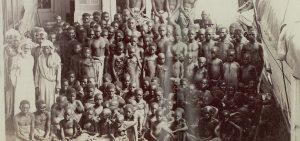
African Children Victims of the Arab Slave Trade
Terms like “Islamic Invasion” and “foreign religions” are painted all over African history exclusively as if this was the process by which Christianity and Islam came into Africa. Islam has been a native part of the African landscape for 1418 years, Christianity for 2000 and Judaism for far longer. Yet history paints Christianity in Europe as if it was fundamentally a European institution, they paint Buddhism in China as if it’s origins where Chinese. Anthropologist seek to extract religion from reality and make Africa the perpetual victim. This unique thesis where Africans are concerned reasserts the lack of agency and racist perception of a “child like” and weak Africa. [4]
The resurgence of Islamophobia has brought this aspect of history to the foreground as a form of anti- Arab sentiment in an attempt to further the riff between African people and Arabs, and ultimately between African Muslims and other Africans. Considering 50% of the African continent is split between these two faiths, little imagination is needed to appreciate the outcome of agitating the religious divide. Still today, the fastest way to get a book published as an African is to write on Arab/African slavery.
Looking deeper shows great political and economic support from far-right “special interest” Christian American fundamentalists. The best recent example of this malicious activity occurred during the Darfur crisis where it was said that “Arabs were killing Africans.”
Anyone who is familiar with the ethnic dynamics of Sudan immediately would understand how nonsensical this is. The so-called Arabs are really Africans, there are no different from the so-called non-Arabs of Sudan—they are generally the same complexion and both groups are Muslim. The meaning of Arab in Sudan is radically different from that definition in the West. Nevertheless, the Western press is fully aware of the racial tension that mislabeling these so-called Arabs would cause and have exploited race dynamics to their end.
The problem is the uniformed Africans in the west joins the anti-Arab camp because of their lack of cultural information on their own motherland. The political agenda of our time if not considered, with a wise mind, is an accident that has already happened. See The US Role In Darfur by Sara Flounders.
FORWARD
It was said that the definitive issue in the African Holocaust was not systems of enslavement, as they are as old as humanity, but the chattlization of a people to mere commodities, labor units, devoid of language religion and culture. The issue is the continuing legacy of enslavement and social reality of Africans living in the shadow of history’s greatest Holocaust : This is the arguing point between Africans and Europeans. Cultural disownership, poor education, inferiority complex, drugs, HIV, is not the results of neither the Arab trade, or the inter-African slave system. Therefore, it is fundamental that the focus of the issue with the European trade be restated—it is about legacy.
The continuation of dishonest scholarship, loaded with one-sided arguments that work one way but not the other, pervert the African historical narrative and reduce the quality of scholarship. The driver behind many so-called African-centered scholarship is an appeal to base emotions.
We cannot honestly continue to look at the issue of slavery from the well-dressed self-empowering windows of old. A new era demands a new study, a new agenda for a new outcome. African people today are no more informed on the realities of enslavement compared to 20 years ago. The divide or inactivity in African-centered academics has created a wide enough space for the continuing assertion of Eurocentric scholarship.
History is not always pretty and requires a strong stomach and a brave face to plunge into the horrors of the past. There is nothing romantic about history, the myths and stories of old are rarely cast from the hard stone of reality. If our claim is the restoration of humanity then those profiting from the inherent ignorance of impoverished communities are only riding thin emotional lines, while all the while exploiting racial phobias.
It is our duty to initiate a new discourse on African history built on an authentic foundation, or we can continue to revamp and polish the racist laden lies that created the dilemma in the first place.
REFERENCES
Translation From Arabic documents (Tarikh Ul Sudan) to English done by Muhammad Shareef who liased with John Hunwick on the monumental translation.
* Catherine Lowe Besteman, Unraveling Somalia: Race, Class, and the Legacy of Slavery, (University of Pennsylvania Press: 1999),
Umayyad were Arab-centric, Pan-Arab who saw Islam and their personal possession. Dispossessing and marginalizing non-Arabs, despite the fact that many non-Arabs predated the “Arab” association with Islam (Arabs were resistant to Islam which attracted non-Arab people who were persecuted by Arabs). The Muslim Arabs were the elites of Umayyad society, and saw it as their duty to rule over the conquered areas. Despite the fact that Islam teaches the equality of all Muslims, the Arab Muslims held themselves in higher social rank (regardless of piety) than Muslim non-Arabs, and generally did not mix with other Muslims. Islam was not encouraged among conquered peoples. “Islam was in fact regarded as the property of the conquering aristocracy.” (Hawting)
Not all African women were raped or used for sex slavery. The Bantu (Hudwick) were less frequently used for sex-slavery as they were not seen as attractive as Habesha (Ethiopian) slaves. The Somali slavers avoided all sexual contact with Bantu slaves due to perceived racial superiority. (Besteman1999)
Any institution brought from another people carries the cultural flavor of those people bringing it. Asia which had a strong cultural agency accepted Islam and made it Asian, the same is true for the Far East, the same is true for Ethiopia and West Africa. When people of less cultural power are impacted they cannot filter out the culture of the bearers. This is not only true for religion, it is true for technology also: Everything humans do is scented with their cultural disposition.
The Eurocentric opinions of Orientalist scholarship has been copied into Africanist europhone writings. These attitudes reflect a failure to account for the full complexities and heterogeneity of Islam and its history in Sub-Saharan Africa. (Bangura)
* [1] Paul Lovejoy, Slavery On the Frontiers of Islam
* Catherine Lowe Besteman, Unraveling Somalia: Race, Class, and the Legacy of Slavery, (University of Pennsylvania Press: 1999)
* Investment banks Brown Bros. Harriman and Lehman Bros. Railroads Norfolk Southern, CSX, Union Pacific and Canadian National. Textile maker WestPoint Stevens. Newspaper publishers Knight Ridder, Tribune, Media General, Advance Publications, E.W. Scripps and Gannett, parent and publisher of USA TODAY. 850 The Richmond, Fredericksburg & Potomac Railroad, part of CSX today, paid slave owners $30 to $150 apiece to rent slaves for a year. Price in 1850: $150 In today’s dollars: $3,379 1856 The Mobile & Girard, now part of Norfolk Southern, offered slaveholders $180 apiece for slaves they would rent to the railroad for one year. 1856: $180 Today: $3,737 1859 The Central of Georgia, a Norfolk Southern line today, valued its slaves at $31,303. 1859: $31,303 Today: $663,033 1865 The Nashville & Chattanooga Railroad, today part of CSX, placed a value of $128,773 on the slaves it lost as a result of emancipation at the conclusion of the Civil War. 1865: $128,773 Today: $1.4 million 1865 The Mobile & Ohio, now part of Canadian National, valued slaves lost to the war and emancipation at $199,691. 1865: $199,691 Today: $2.2 million Sources: Economic History Services, USA TODAY research The list of corporations tied to slavery is likely to grow. Eventually, it could include energy companies that once used slaves to lay oil lines beneath Southern cities, mining companies whose slaves dug for coal and salt, tobacco marketers that relied on slaves to cultivate and cure tobacco. Slavery’s long shadow also could fall over some of Europe’s oldest financial houses, which were leading financiers of the antebellum cotton trade. Lloyd’s of London, the giant insurance marketplace, could become a target because member brokerages are believed to have insured ships that brought slaves from Africa to the USA and cotton from the South to mills in New England and Britain.
* Most of the resources in African controlled by non-Africans are in the hands of Europeans not Arabs or Turks.
The African Diaspora in the Mediterranean Lands of Islam(Princeton Series on the Middle East) by Eve Troutt Powell (Editor), John O. Hunwick (Editor) “2:177: Righteousness does not consist in turning your faces toward the East- Van Sertima, Ivan. ed. The Journal of African Civilization.
- “The Negro Writer and His Relationship to His Roots,” in The American Negro Writer and His Roots: Selected Papers From the First Conference of Negro Writers.
- Rodney, Walter. How Europe Underdeveloped Africa. Washington, D.C.: Howard University Press. 1974.
- World’s Great Men Of Color. Vols. I and II, edited by John Henrik Clarke. New York: Collier-MacMillan, 1972.
- The Negro Impact on Western Civilization. New York: Philosophical Library. 1970.
- United West Africa (or Africa) at the Bar of the Family of Nations.Ghana: Privately published. 1927.
- Blacks in Antiquity: Ethiopians in the Greco-Roman Experience Cambridge, Ma.: Belnap Press, Harvard University. 1970.
ARABIC HISTORICAL SOURCES
Taken from http://bewley.virtualave.net/tashfinbib2.html
Given the shortage of archive documents, epigraphic and archaeological documents, we are reduced to second-hand literary information since most of the great Murabitun chronicles have not reached us. The critical examination which follows will stress the fundamental distinction between primary works and works which are compilations. We will deal with the lost Murabitun chronicles from which some extracts have reached us by means of later works.
I. The Lost Murabitun Chronicles
1. Kitâb al-anwâr al-jaliyya fî akhbâr ad-dawla al-Murâbitiyya. (The Book of Splendid Lights concerning the history of the Murabitun Dynasty) by Ibn as-Sayrafî.
An Andalusian poet, historian and traditionalist, born in Cordoba in 467 /1074, Ibn as-Sayrafî was the secretary of the Murabit prince Abu Muhammad b. Tashfin, who ruled Spain from 520 to 531 AH. His work retraced the history of the Lamtuna. Ibn al-Khatib says that it contained the accounts of the great events which took place in Spain up until 530 /1135-6. It first stopped at that year, and then was continued by its author up until his death in 557/1162 or 570/1174-1175. There are only some extracts left which are found in the Bayân of Ibn ‘Idhâri, al-Hulal al-Mawshiyya and the works of Ibn al-Khatib.
2. Kitâb al-muqtabis fî akhbâr al-Maghrib wa’l-Andalus wa Fâs. (The Book of the one who desires to know the history of the Maghrib and Andalus and Fes) by Abu Marwan ‘Abd al-Malik b. Musa al-Warrâq.
We know nothing about this author which cannot be confused with Muhammad b. Yusuf al-Warraq (904-973), the informant of al-Bakri. This work must have been a history of the Maghrib and Andalusia of the genre of the Muqtabis of Ibn Hayân (d/460/1070).
Some passages of this work are quoted in Mafakhir al-Barbar (pp. 53, 81), which gives us two long extracts: the first deals with the activities of Yusuf b. Tashfin against the Zanata; and the second gives a detailed list of the various Lamtuna governments which administered Cordoba, Seville, Granada, Valencia and Saragossa, from the conquest of Yusuf b. Tashfin up to the disappearance of the movement under Muwahhid pressure.
3. Kitâb al-Bayân al-wadih ‘an al-mulimm al-fâdih by Ibn Alqama about which we have no information whatsoever.
4. Kitâb al-muftariq which is anonymous, or the Majmû’ al-muftariq which is mentioned by Ibn ‘Idhâri (Bayan, 48), but we know nothing more about its subject.
5. It is the same with the Kitâb Ansâb al-Barbar by Abu ‘Abdullah b. Abi al-Majd al-Majili, quoted by in Mafakhir al-Barbar (pp. 57-58).
II. The Muwahhidun Chronicles
6. Nazm al-jumân fî akhbâr az-zamân by Ibn al-Qattân (d. 628 /1230), who was the qadi of Sijilmassa. He was a famous traditionalist who enjoyed great fame. Ibn ‘Idhâri quotes him among his sources and uses him for information long before the arrival of the Muwahhidun and information about the Murabitun. This work is divided into seven parts. The part which has reached us covers the Murabitun and Muwahhidun period, the end of the fifth century to the beginning of the sixth century of the hijra, particularly regarding the events dealing with the reign of Yusuf b. Tashfin and his son ‘Ali.
7. Kitâb al-mu’jib fî talkhîs akhbâr al-Maghrib of ‘Abd al-Wahid al-Marrakushi who, in 621 h/1124, managed to abridge the history of the Muslim West. Born in Marrakech on 7 Rabi’ II 581/8 July 1185, this bard of the Muwahhid dynasty does not report the activities of Yusuf b. Tashfin other than his battles with the Taifa kings and the Christian princes.
8. Al-Hulal al-Mawshiyya is an anonymous chronicle by a Spanish author living in the time of Muhammad V of Granada, whom he praises in the introduction of his book. It was attributed to Ibn al-Khatib and to Ibn Battuta. Completed in 793 /1381-1382, it was a compilation of the various historical sources borrowed from better-informed authors, like Ibn as-Sayrafi, Ibn Sahib as-Sala, Abu Yahya b. al-Yasa’, al-Baydhaq, Ibn al-Qattan and others, but it also includes official letters whose authenticity is doubtful as well as various legends.
Contrary to what the complete title of the book implies, it is not a history of Marrakech, the capital of Morocco, but actually a résumé of the facts concerning the reign of the Murabitun and the beginning of the Muwahhid empire up until the reign of ‘Abd al-Mu’min. This chronicle, written at the time of the Crusades when Islam saw itself violently attacked in the East as well as in the West is marked by the desire to exalt the feats of arms of the Muslim princes to the point of exaggeration.
III. Maghribi and Eastern Compilations
9. Kitâb al-Iktifâ’ fî akhbâr al-Khulafâ’ of Ibn al-Kardabus recounts the historical facts up to the reign of the Muwahhid khalif Abu Ya’qub Yusuf b. ‘Abd al-Mu’min (558-580 /1184-1185). The part of this history that deals with the history of the Murabitun is to be used with caution because, most of the time, the chronology is in disagreement with the majority of other sources.
10. Bayân al-Mughrib fî akhbâr al-Maghrib. These annals of the Maghrib and Spain, compiled by Ibn ‘Idhari, qa’id of Fes, which were still being written in 712 /1312-1313, are a basic source for the history of the Maghrib and Andalusia because it gathers together chronicles which are mostly lost.
The third part deals with the history of the Murabitun and Muwahhid empires, the dynasties of the Hafsids in Ifriqiya, the Banu Hud and the Nasrids in Andalusia, and the Banu Marin of Morocco.
The Bayan is of great interest for the Murabitun period. Ibn ‘Idhâri deals with contemporary sources of events on the genesis and development of this movement.
The acephalous manuscript of the Bayan concerning this period, published by A. Huici Miranda, begins with a conversation between the amir of the Juddala, Yahya b. Ibrahim, and Abu ‘Imran Musa al-Fasi at the Qayrawan, his visit to Wajjaj in Malkus, the selection of ‘Abdullah b. Yasin, and follows the course of the history of Yahya b. Ibrahim, following a very different chronology from that of the Rawd al-Qirtas. Moreover, it is unfortunate that a large gap in the manuscript deprives us of the account of the events which took place between 451 /1059 and 460/1067-1068. But it also relates to us events which are absolutely unpublished.
11. Kitâb Mafâkhir al-Barbar, a work compiled in 712 h/1312, by an anonymous author, provides interesting information about ‘Abdullah b. Yasin, Yahya b. ‘Umar, Abu Bakr b. ‘Umar and Yusuf b. Tashfin, in particular the same date of the foundation of Marrakech as Ibn al-Athir, Ibn ‘Idhâri and al-Hulal al-Mawshiyya, i.e. 462/1070. Sometimes he uses the quotations of the Dhakhira of Ibn Bassam about the capture of Tangier and Ceuta, from the Kitâb al-muqtabis fî akhbâr al-Maghrib wa’l-Andalus of Ibn Khamado of Ceuta, from Mizân al-‘amal fî ayyâm ad-duwal of Ibn Rashiq, of the Muqtabis fî akhbâr al-Maghrib wa’l-Andalus wa Fâs of Abu Marwan al-Warraq, of the Kitâb Ansâb al-Barbar of Abu ‘Abdullah b. Abi al-Majd.
12. Kitâb al-anis al-mutrib bi-rawd al-qirtas. Drafted during the first third of the 14th century, 726/1326 by Ibn Abi Zar’, this history of Fes and Morocco is a plagiarism of the Bayân of Ibn ‘Idhâri. Inspired by al-Bakri, the Rawd al-Qirtas and the Bayân tally in their description of the nomadic life of the Saharans and the facts relating to Yahya b. Ibrahim. Subsequently, the Rawd al-Qirtas begins by confusing the chronology and leading us astray by imaginary facts and silence on the events related by the Bayân and al-Hulal al-Mawshiyya.
13. Kitâb al-‘Ibar by Ibn Khaldun (732-784/1332-1382), a well-known historian, sociologist, and philosopher. This author devotes a large place to the history of the Murabitun movement. He also concentrates a lot on the contribution of the works of al-Bakri, Ibn Abi Zar’, Mafakhir al-Barbar as well as the Bayân of Ibn ‘Idhâri. For the chronology of the first period of the movement up until the death of ‘Abdullah b. Yasin and his successor Ibn ‘Abbu, he adopts the chronology of al-Bakri, Ibn ‘Idhâri, al-Hulal al-Mawshiyya, and Mafakhir al-Barbar. Subsequently, after 452 AH, he followed the presentation of events presented by the Rawd al-Qirtas, differing from the other sources and allowing himself to be drawn into an account that seems to err about events, especially concerning the government of Abu Bakr b. ‘Umar and the lieutenancy of Yusuf b. Tashfin. He does not return to the primary sources until after the capture of Ceuta in 476 AH and the first crossing of Yusuf b. Tashfin to Andalusia. To describe the activity of the Murabitun in Andalusia, he uses both categories of sources which we are going to discuss, as well as Ibn Kardabus up until the death of Yusuf b. Tashfin.
14. Kitâb A’mâl al-a’lam by Ibn al-Khatib, wazir and historian of Granada. It is an unfinished history of Islam. Its first part is devoted to the east and the second to Muslim Spain, with an appendix on the Christian kings of the Reconquest, and the third part is about North Africa and Sicily.
Written around 776/1374, this work is especially useful for learning about the policy followed by Yusuf b. Tashfin in Andalusia and the situation of the Taifa kings vis-à-vis the king of Castille, Alphonso VI. However, his information is very condensed and must have been borrowed from Ibn ‘Idhâri. It is certain that he did not take into account Ibn Kardabus, because the dates which he gives us do not coincide with those given by that writer. It is possible that he did not possess the Rawd al-Qirtas of Ibn Abi Zar’, the first third of which was written in 726 h. But it is difficult to recognise his sources for the period which concerns us because he does not name them.
15. Kitâb al-kâmil fî’t-tarîkh of Ibn al-Athir who was born 4 Jumada I 555/12 May 1160. He spent most of his life in Mosul.
Volumes ix and x include some chronicles which deal with the beginnings of the Murabitun movement , the reign of Abu Bakr b. ‘Umar and that of Yusuf b. Tashfin, whose role in Andalusia seems to have caught the interest of our author who quotes long passages on this subject from Ibn al-Labbana, the poet and friend of the prince of Seville, al-Mu’tamid. But it must be said that the chronology given is not always satisfactory. Moreover, this book strongly influenced Ibn Khallikan in his composition of the article of the Wafayât which deals with Yusuf b. Tashfin.
IV. Geographers
16. Kitâb al-Mughrib fî dhikr bilâd Ifriqiya wa’l-Maghrib, or Kitâb al-Masâlik wa’l-Mamâlik. Abu ‘Ubayd al-Bakri, died in 487/1094, composed this work in 461 h/1068 assisted by literary and oral information, from his residence in Spain which he never left.
His worth is inestimable for enabling us to grasp the religious context which gave birth to the Mulaththimun movement. A contemporary of the events which concern us, he provides a narrative of the events in which ‘Abdullah b. Yasin and the first amirs of Juddala, Yahya b. Ibrahim, Yahya b. ‘Umar, and his brother Abu Bakr b. ‘Umar, participated. One can state, in view of his account, that he did not conceive of the happy fortune of this burgeoning movement, so his information is all the more objective and worthy of credence.
Elsewhere he paints a very interesting picture of the religious situation of Maghrib al-Aqsa and the powerful sects of the Bajaliyya and Barghawata which were well entrenched in these regions, not to mention the economic information which one can extract from this book which enables us to grasp the nature of the exchanges which existed at this period. It is unfortunate that as he was a witness of the military and political intervention of Yusuf ibn Tashfin in Spain and to the successive dethronement of the Taifa kings, we do not find an echo of this in his work. He was above all a geographer, but his historical digressions are invaluable.
17. Kitâb nuzhat al-mushtâq fî ikhtirâq al-afâq. Al-Idrisi owes his fame to this work of descriptive geography. This book was written at the command of Roger II, the Norman king of Sicily, to illustrate a large silver planisphere which the author himself had built. It is for this reason that the work was called Kitâb Rujâr (The Book of Roger). This book was completed in 548/1154. It does not give hardly any historical elements about the birth of the Murabitun movement, but it gives an understanding of the economic activity in the 11th and 12th centuries. His contribution is useful for us in the description of the fortresses and fortified towns of Maghrib al-Aqsa, and the allusion to some illegal taxes imposed on merchandise, and the economic characteristics of each area of the Sahara, Sus and Maghrib al-Aqsa. He nevertheless owes a lot to Ibn Hawqal.
18. Kitâb al-Istibsâr. This work, compiled in 587 /1191, whose author is unknown, is a description of Egypt and the Maghrib. Certain passages suggest that its author lived during the reign of the Muwahhid Ya’qub al-Mansur, and that his patron was a high dignitary, Shaykh Abu ‘Imran b. Abi Yahya b. ‘Uqtin, a patron to whom he dedicated his book and whose favors he sought. It seems that he wrote this book in 587 /1191 in the month of Ramadan/September-October.
The details which he gives on Meknes, Fes and Marrakech show a deep familiarity with these towns. He certainly lived there. When he dealt with the Sudan, he says that he consulted official letters sent in the name of Gana, king of one of these countries and destined for Yusuf b. Tashfin, which is to say that he had in his possession the ancient Murabitun archives.
IV. Historico-biographical sources
19. We should mention the Memoirs of ‘Abdullah, the last Zirid of Granada (460-483 /1076-1091). He wrote them at Aghmat after having been deposed by Yusuf b. Tashfin in 483 /1090. There we have a first-hand description of the Andalusian policy of the Murabitun. But he remains silent on the events which preceded the first crossing of the Amir al-Muslimin to Andalusia.
20. In dealing with the resistance of Suqut al-Barghawati, the king of Tangier and Ceuta, to the invasion of the Murabitun, we have used some extracts from the Dhakhira fî mahâsin ahl al-Gazira of Ibn Bassam (d. 542 /1147). Information on the political life and administrative organisation has been collected in the Kitâb as-Sila of Ibn Bashkuwal (d. 578/1183); Bughyat al-multamis fî ta’rikh rijâl al-Andalus by ad-Dabbi (d. 599/1203); al-Hulla as-Siyarâ of Ibn al-Abbar (d. 658 /1260), the Analects (Nafh at-Tîb) of al-Maqqari (d. 1061 h/1651) and the Wafayât which Ibn Khallikan finished in 673 /1274
References
| ↑1 | This article while not directly related shows a compelling argument against involving religion in human problems. Arabs enslaved Africans before Islam, just like Europeans did not need Christianity to enslave Africans. Religion might have been used to justify enslaving Africans, but it was not central in the reason for enslaving people. The central motive is 100% human greed. The bottom line is always in dollars. |
|---|---|
| ↑2 | see numbers section |
| ↑3 | Especially since the Western assassination of Gaddafi. |
| ↑4 | If we had big industries manufacture products we would also create local wealth, local skills, and local jobs and our people would not have to cross the Red or Mediterranean sea and end up slaves. |
| ↑5 | Archaeology of Slavery in East Africa Chapurukha M. Kusimba |
| ↑6 | It is the oldest also because it has not stopped |
| ↑7 | It is sometimes said that the Emancipation Proclamation freed no slaves. In a way, this is true. The proclamation would only apply to the Confederate States, as an act to seize enemy resources. By freeing slaves in the Confederacy, Lincoln was actually freeing people he did not directly control. The way he explained the Proclamation made it acceptable to much of the Union army. He emphasized emancipation as a way to shorten the war by taking Southern resources and hence reducing Confederate strength. Even McClellan supported the policy as a soldier. Lincoln made no such offer of freedom to the border states.- Source |
| ↑8 | Cite book|title = Fashion Buying and Merchandising: From mass-market to luxury retail|last = Hebrero|first = Miguel|publisher = Createspace|year = 2015|isbn = 978-1517632946|location = London|pages = 64 |
| ↑9 | Jihad in West Africa During the Age of Revolutions Paul Lovejoy |

